T5-T6 Skull Landmarks/Vertebral Column (ALL WITHIN ONE)
1/199
Earn XP
Description and Tags
intro to skull/vertebrate
Name | Mastery | Learn | Test | Matching | Spaced |
|---|
No study sessions yet.
200 Terms
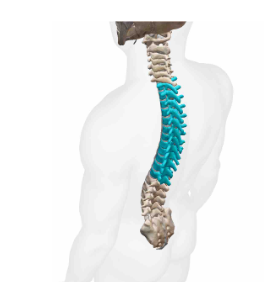
What Region is this
Thoracic
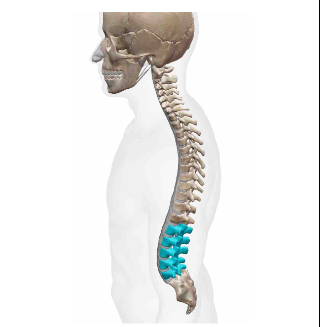
What Region is this
Lumbar

What vertebra?
C1 (‘ATLAS’)
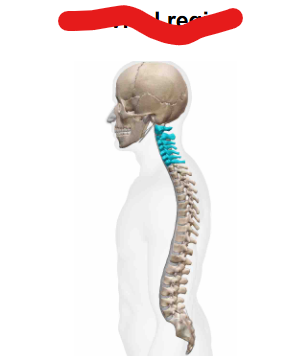
What Region is this
Cervical
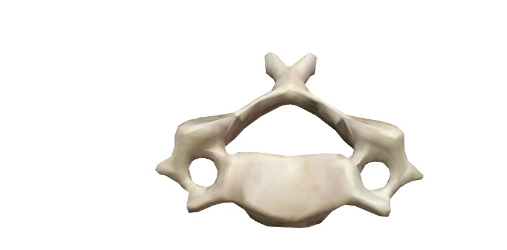
Which Region does this vertebra belong too?
CEREVICAL (MID-CEREVICAL REIGION)
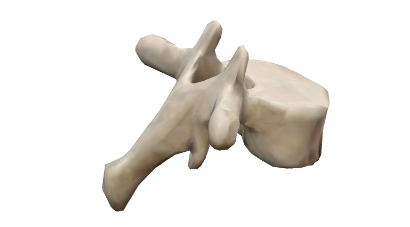
Which Region does this vertebra belong too?
THORAIC (MID-THORAIC-REIGION)
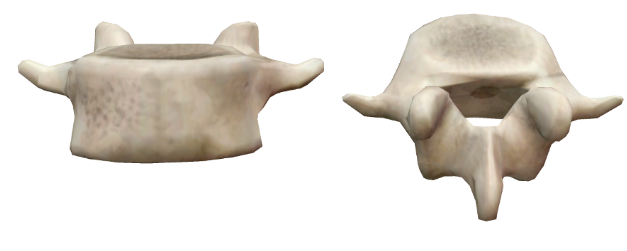
Which Region does this vertebra belong too?
LUMBAR (MID-LUMBAR REGION)

What Vertebra?
C2 (THE ‘AXIS’)

What Vertebra?
Sacrum

What Vertebra?
Coccyx (LOWEST region)
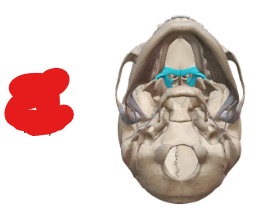
What Facial Bone / How many per?
Palatine Bones > 2-per; left/right
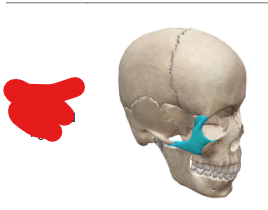
What Facial Bone / How many per?
Zygomatic Bones > 2-per; left/right
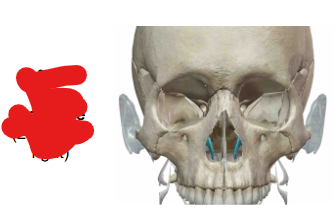
What Facial Bone / How many per?
Inferior Nasal Conchae (2-PER)
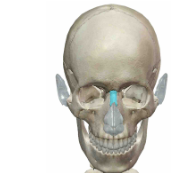
What Facial Bone / How many per?
Nasal Bones > 2-per; left/right
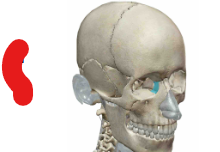
What Facial Bone / How many per?
Lacrimal Bones > 2-per; left/right
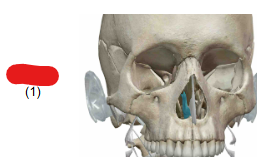
What Facial bone / how many per?
Vomer; 1-per
What is a Fissure?
An Opening in the SKULL > allows for the passage of NERVES/BLOOD = between OUTSIDE/INSIDE of skull
MORE ‘SLIT-LIKE’ THAN ‘OVAL’ LIKE FISSURE
What is the Foramen?
Opening in SKULL > allows for passage of nerves/blood vessles between INSIDE/OUTSIDE of skull
More OVAL/ROUND than ‘SLIT-LIKE’ FORAMEN
What is a Canal
Tunnel/ENCLOSED passageway > in SKULL = travel through the bone to ALLOW FOR NERVES/BLOOD VESSLES (between OUTSIDE/INSIDE)
What is a Process?
a PROJECTION/OUTGROWTH of bone
What is a Fossa?
a shallow/DEPRESSION in bone
What is a Condyle
a ROUND-ISH ending of BONE
What is a Facet?
a FLATTENED-ENDING bone > ARTICULATES/CONNECTS with ANOTHER bone at JOINT
FACET USAULLY refers to FACET JOINTS in VERTEBRAL COLUMNN
The Acronym ‘CN’ means what?
CRANIAL NERVE
NUMBERS IN ROMAN NUERMIARLS
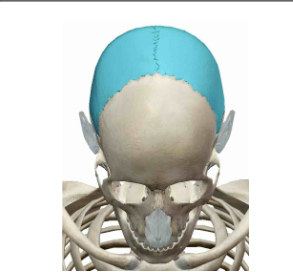
What Cranial Bone?
Parietal Bone > 2 (LEFT/RIGHT)
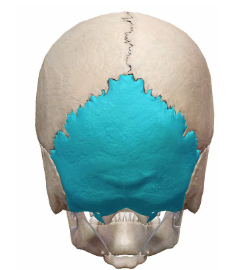
What Cranial bone?
OCCIPTAL > 1 (ALL POSTERIOR)
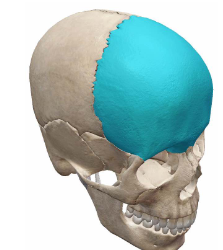
What Cranial bone is this?
FRONTAL > 1 (ANTERIORLY)
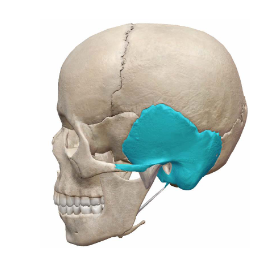
What cranial Bone is this?
Temporal bone > 2 (LEFT/RIGHT)
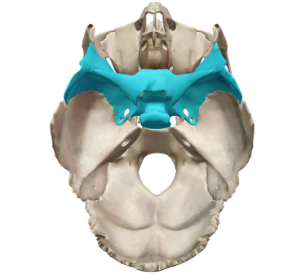
What cranial bone is this?
Sphenoid Bone > (1 BONE) (DEPRESSED ANGLE)
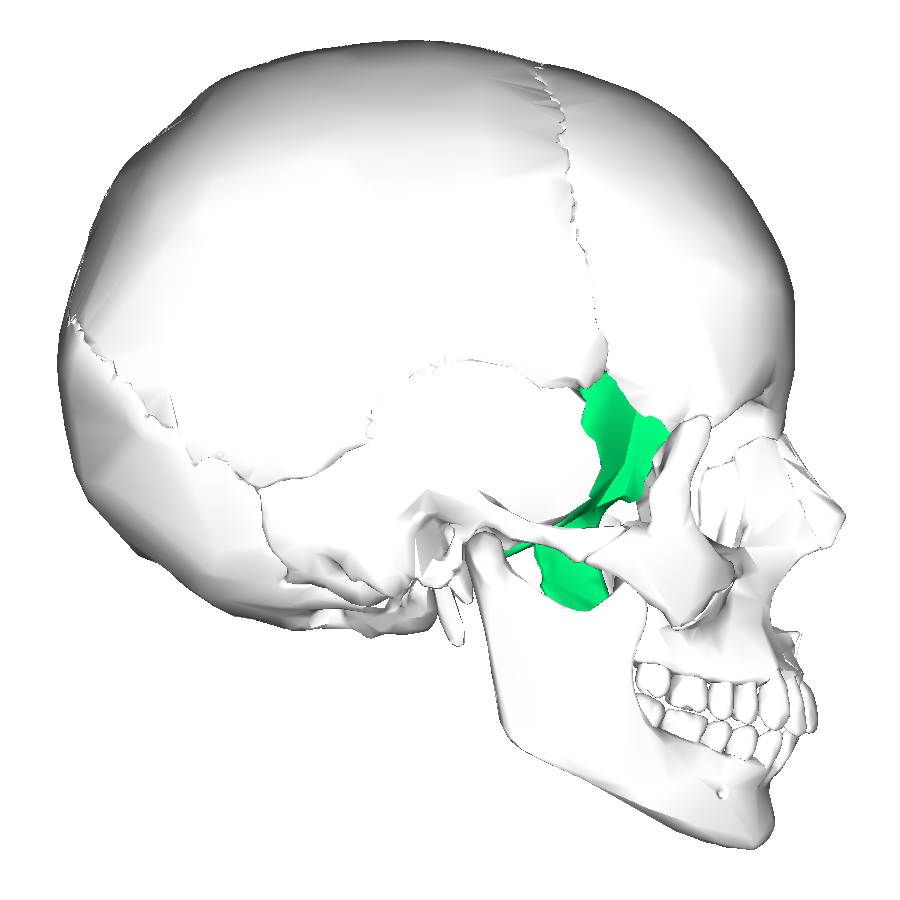
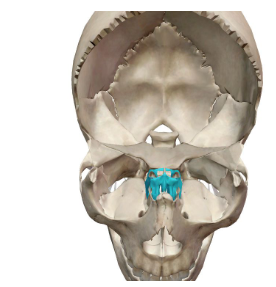
What cranial bone is this?
ETHMOID > 1 (superior to Sphenoid)
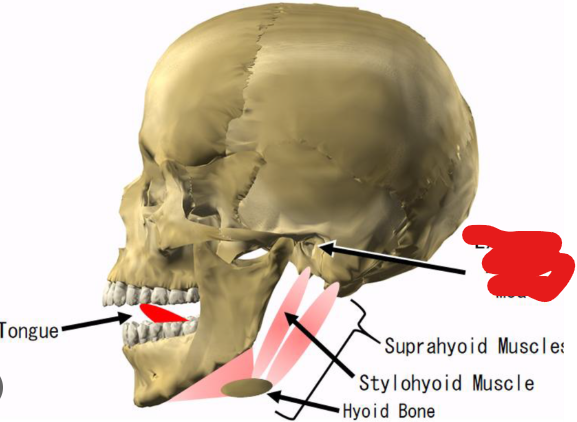
What landmark in the Temporal Region is this?
External Auditory Meatus
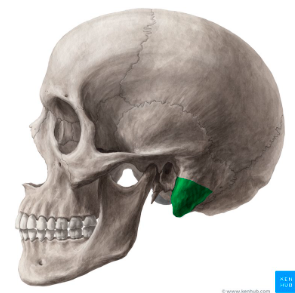
What landmark in the Temporal Region is this?
Mastoid Process
Significance; attachment for Sternocleidomastoid
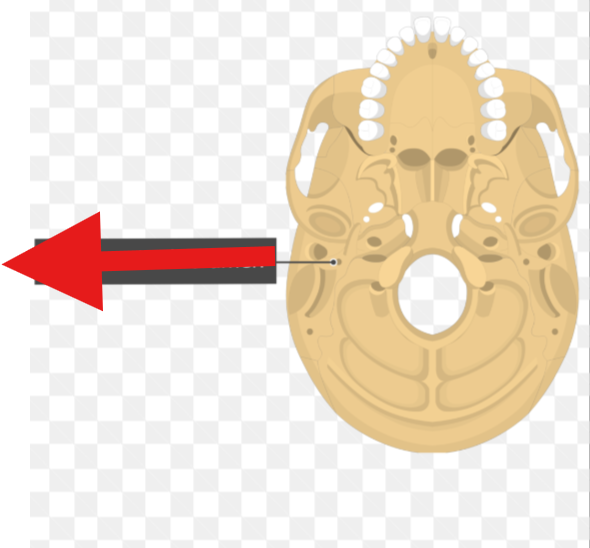
What landmark in the Temporal Region is this?
Stylomastoid Foramen
Clinical Note; INFLAMATTION of facial nerve passing through stylomastoid foramen may result in BELL PALSY > UNABLE TO CREATE FACIAL EXPRESSIONS
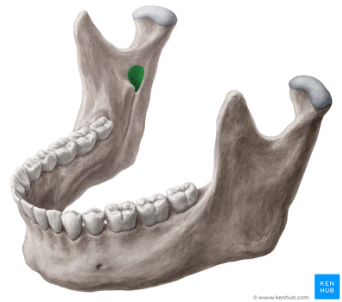
What landmark in the Temporal Region is this?
Mandibular Fossa
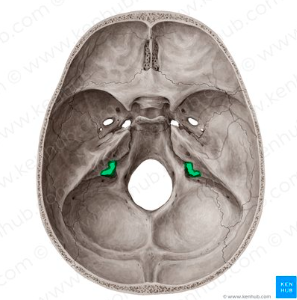
What landmark in the Temporal Region is this?
Jugular Foramen
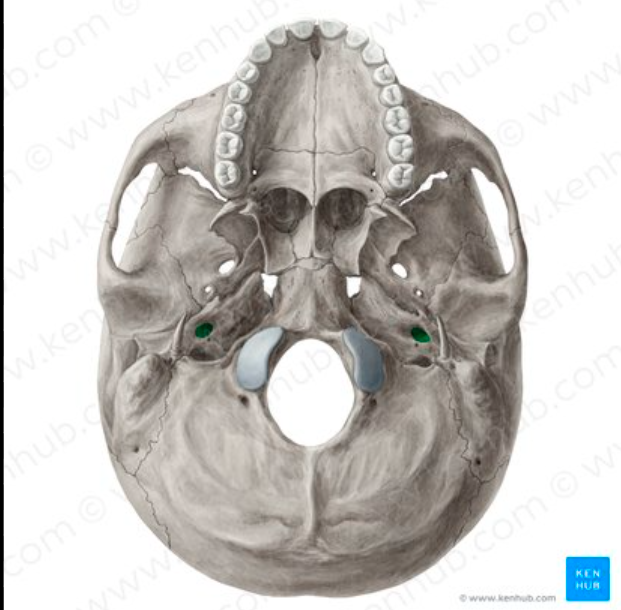
What landmark in the Temporal Region is this?
Carotid Canal
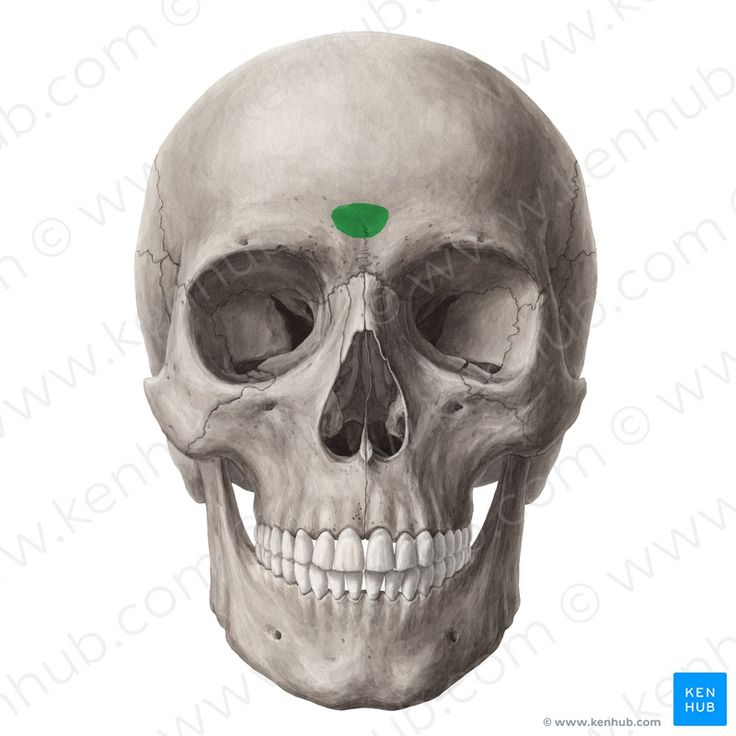
What landmark in the Frontal Region
Glabella
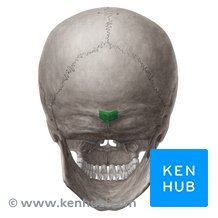
What landmark in the Occipital Region
External Occipital Protuberance
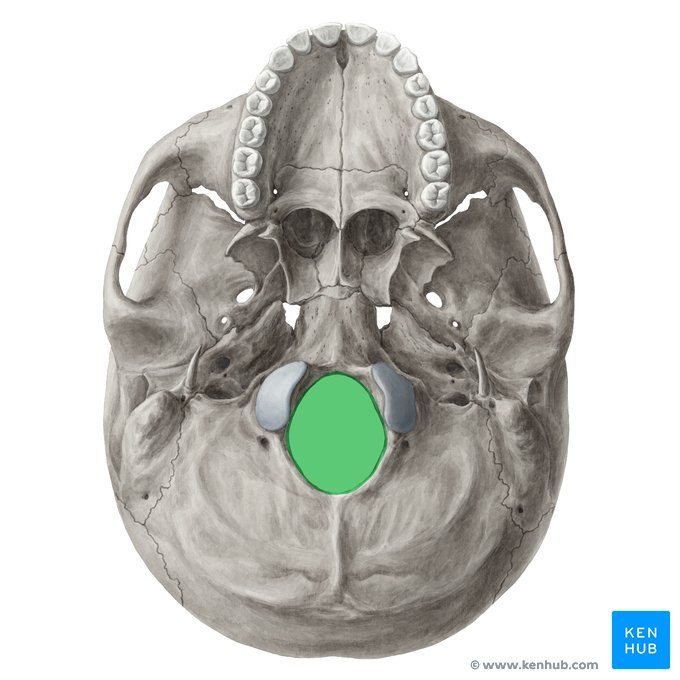
What landmark in the Occipital Region
Foramen Magnum
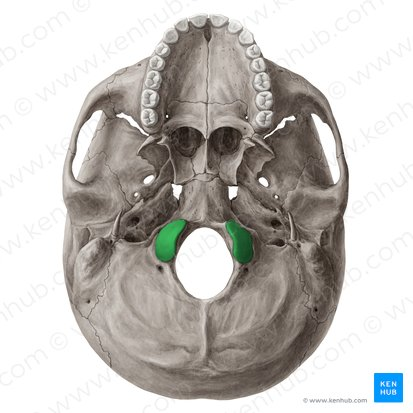
What landmark in the Occipital Region
Occipital Condyles
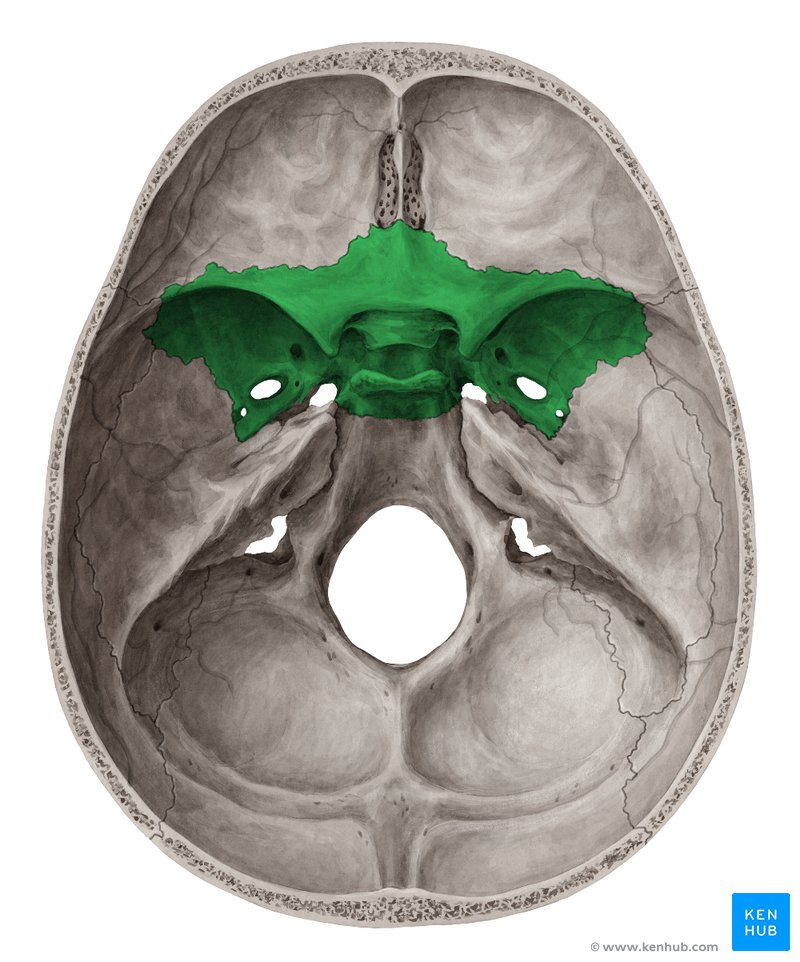
What landmark in the Sphenoid Region?
Greater Wings
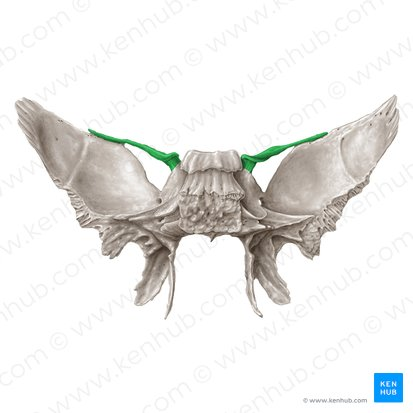
What landmark in the Sphenoid Region?
Lesser Wings
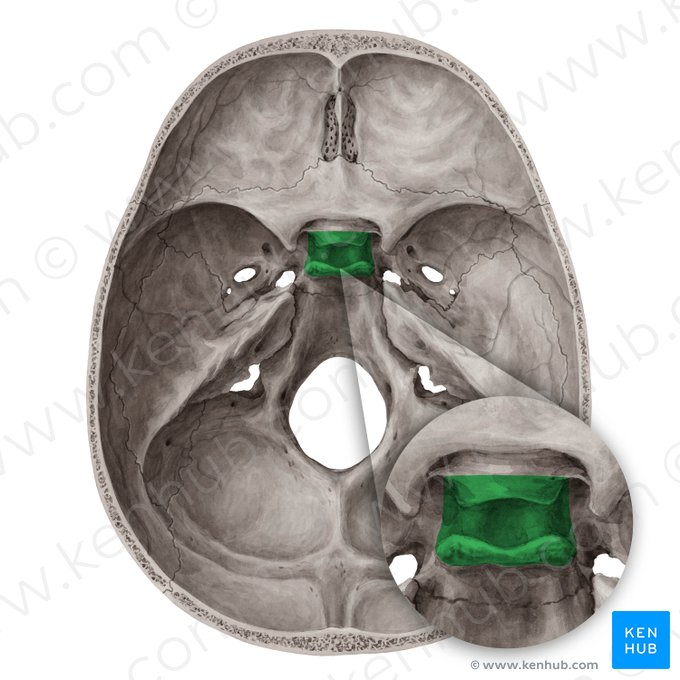
What landmark in the Sphenoid Region?
Sella Turcica
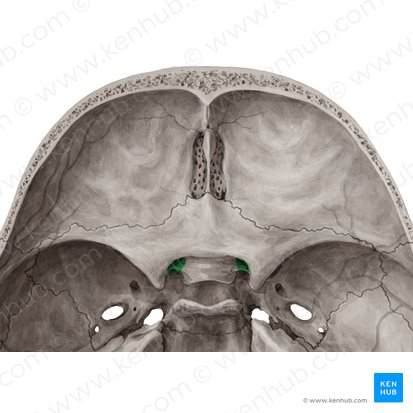
What landmark in the Sphenoid Region?
Optic Foramen
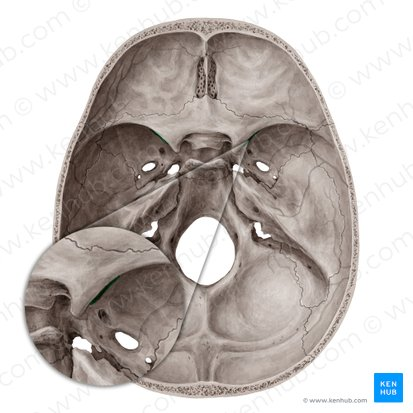
What landmark in the Sphenoid Region?
Superior Orbital Fissure
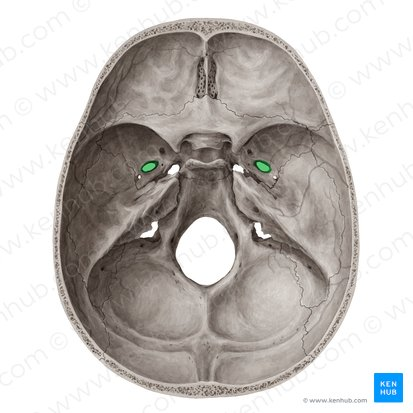
What landmark in the Sphenoid Region?
Foramen Ovale
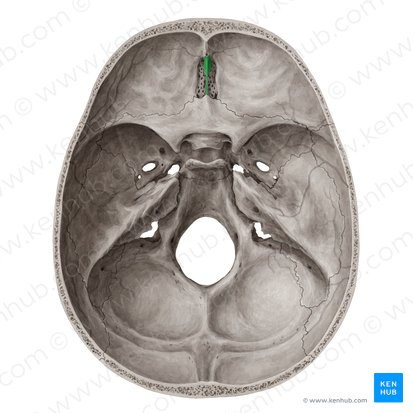
What landmark in the Ethmoid Region?
Chista Galli
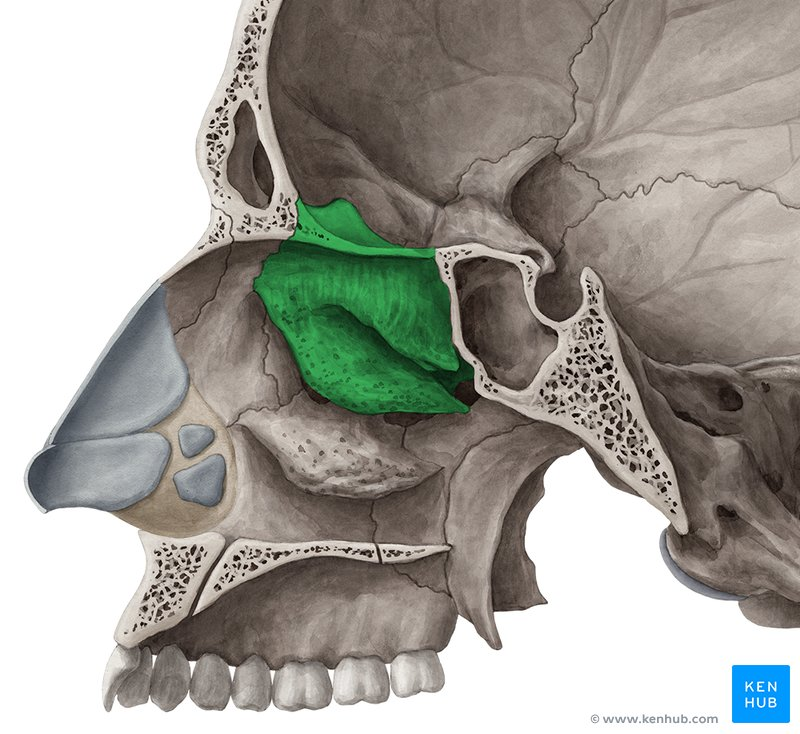
What landmark in the Ethmoid Region?
Cribriform Plate
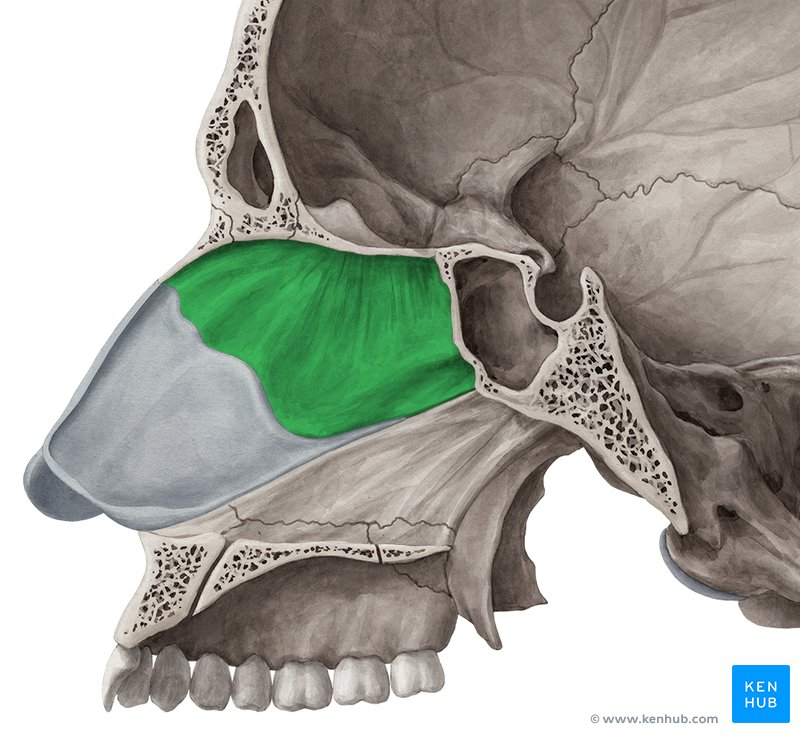
What landmark in the Ethmoid Region?
Perpendicular Plate
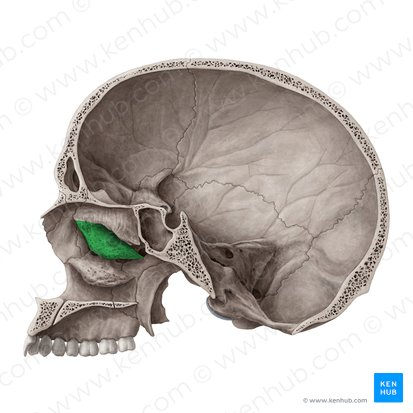
What landmark in the Ethmoid Region?
Superior/Middle NASAL CONCHAE / SUPERIOR/MIDDLE TURBINATES (2-PER)
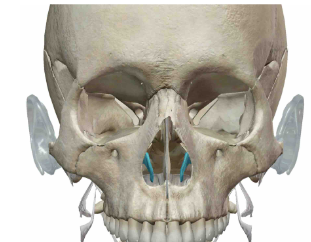
What Facial Bone is this?
Inferior Nasal Conchae (2-per)
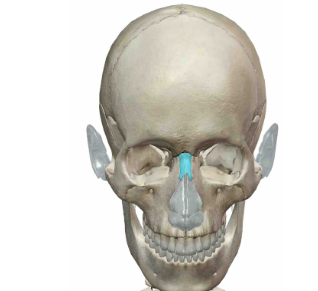
What Facial Bone is this?
NASEL-BONES (2-PER)
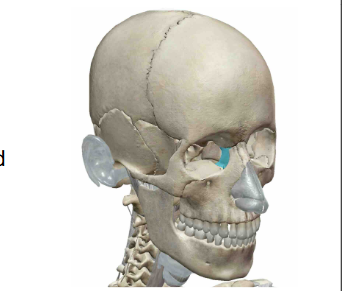
What Facial Bone is this?
Lacriminal Bones (2-per)
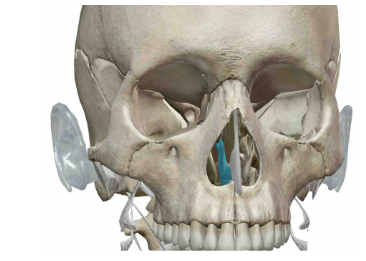
What Facial Bone is this?
Vomer (1-per)
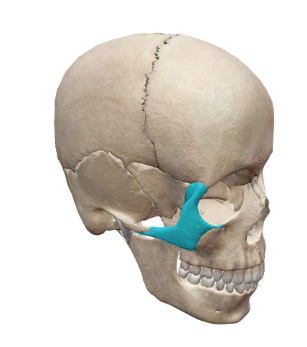
What Facial Bone is this?
Zygomatic (2-per; LEFT/RIGHT)
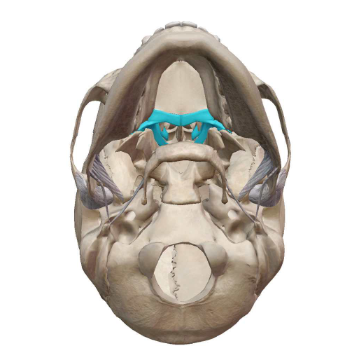
What Facial Bone is this?
Palatine (2-per LEFT/RIGHT)
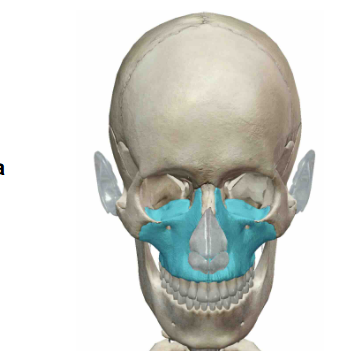
What Facial Bone is this?
Maxilla (1-per)
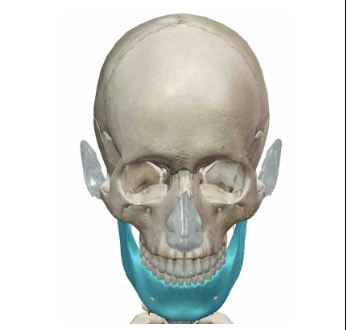
What Facial Bone is this?
Mandible (1-per)
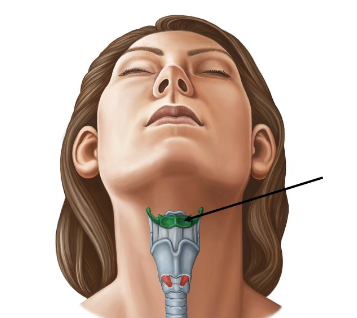
What Facial Bone is this?
Hyoid (1-per)
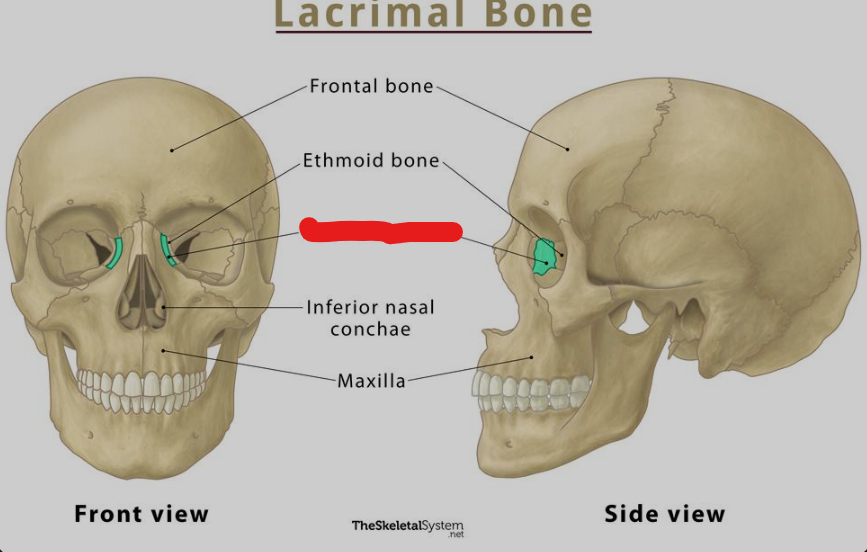
What Facial Landmark is this?
LACRIMA FOSSA
Located @ Lacrimal Bone
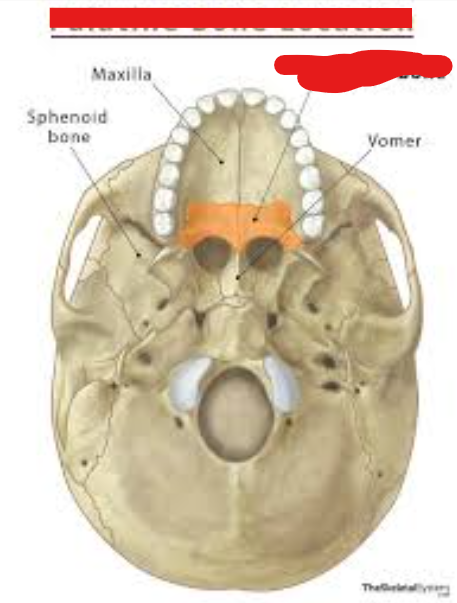
What Facial Landmark is this?
Palatine Process (2-per)
Located @ Maxilla Bone
Clinical Note: Cleft Palate > condition where Palatine Process + Maxilla Bone = dont fuse togerther PROPERLY casuing deformation of the mouth:
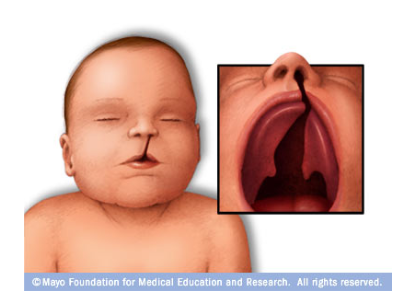
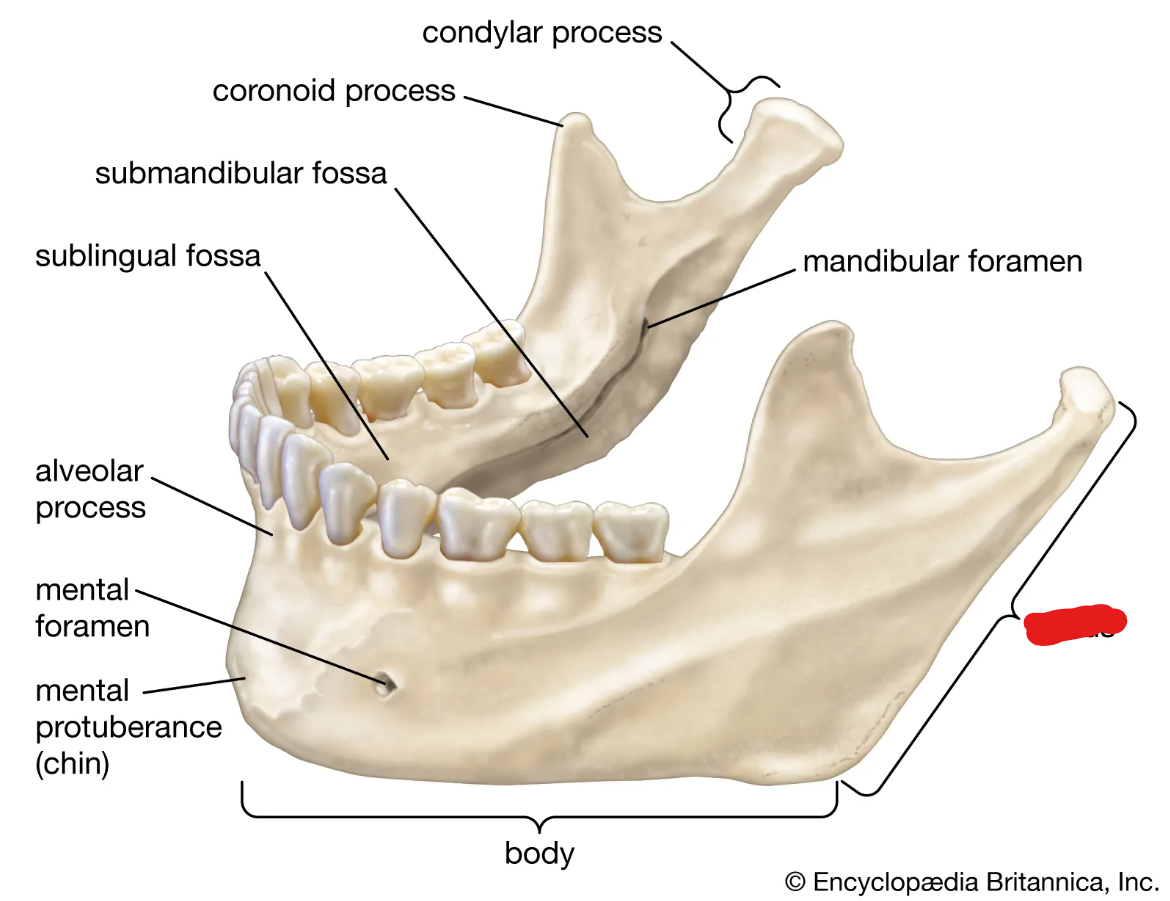
What Facial Landmark is this?
Ramus
Located @ Mandible Bone
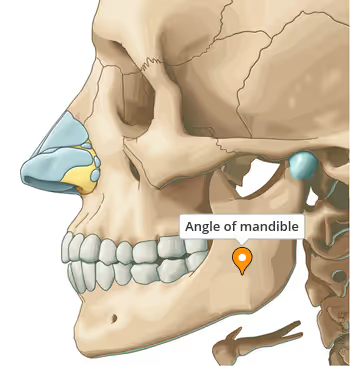
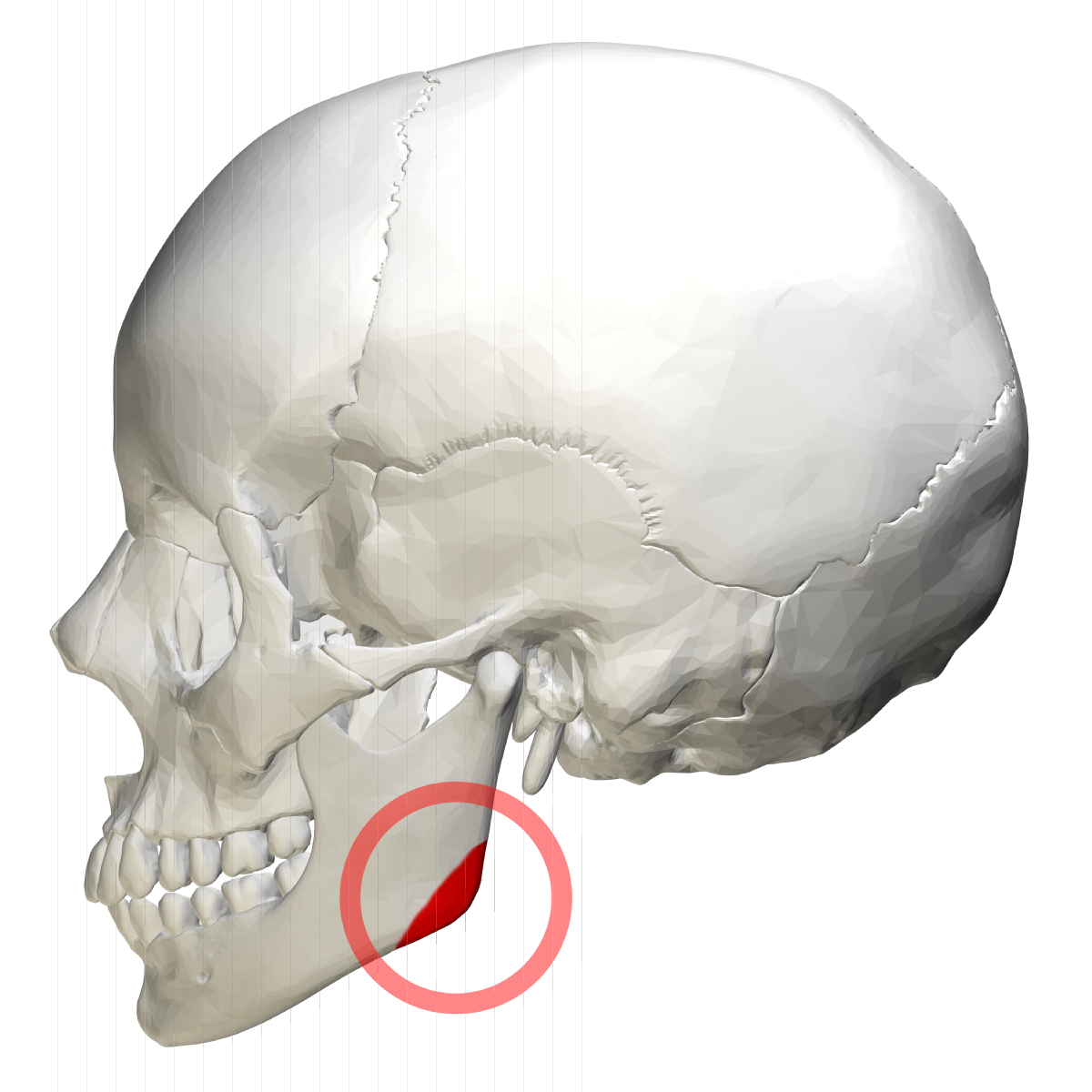
What Facial Landmark is this?
Angle of Mandible
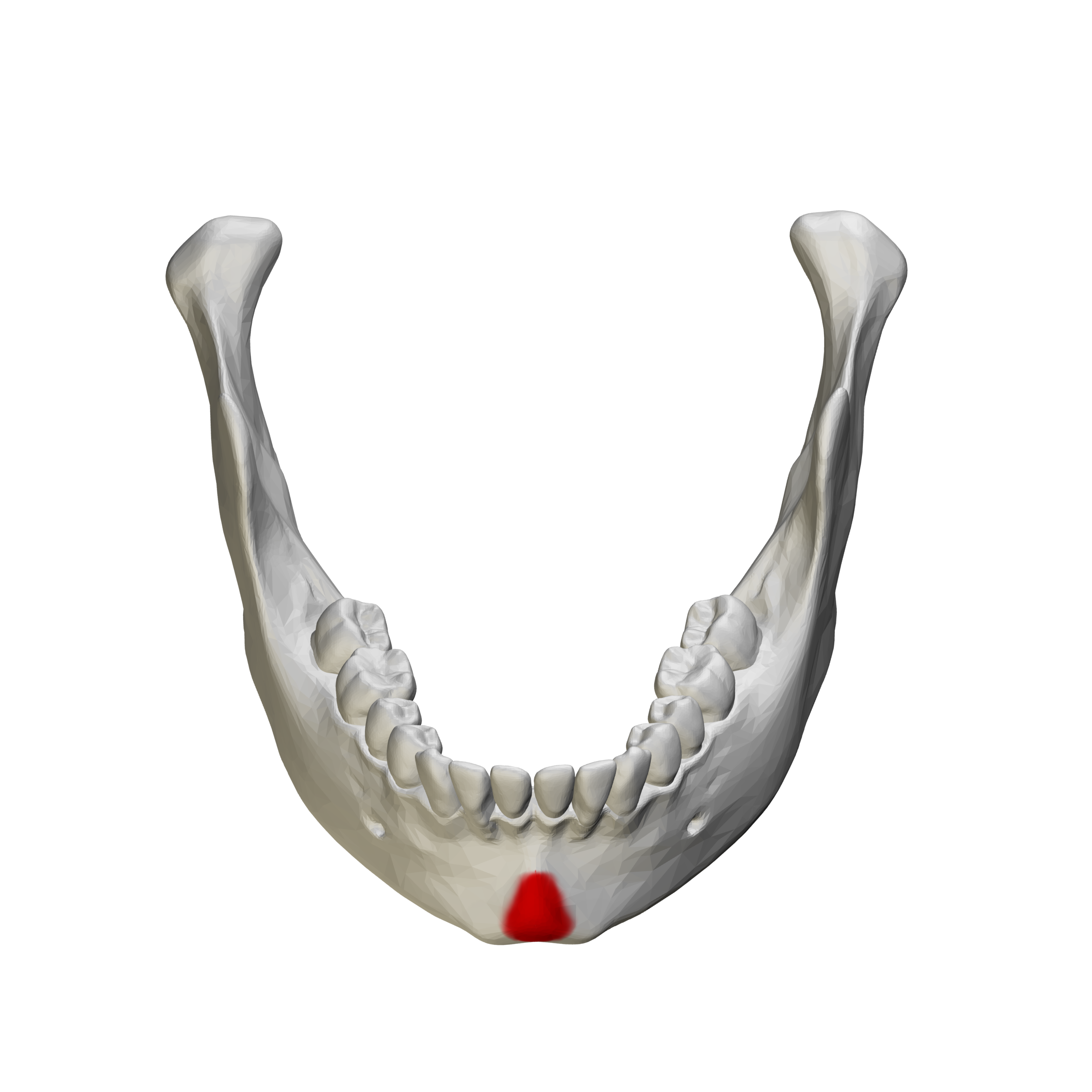
What Facial Landmark is this?
Mental Protuberance
Located @ Mandible (*anteriorly)
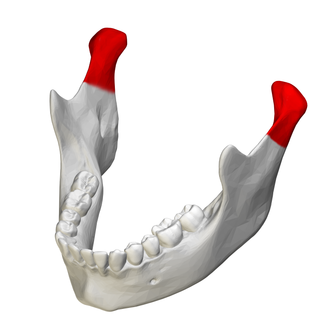
What Facial Landmark is this?
Condylar Process
Located @ Mandible
Projects to FORM > Temporomandibular Joint
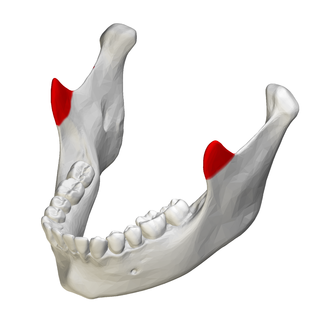
What Facial Landmark is this?
Coronoid Process (2-per)
Located @ Mandible
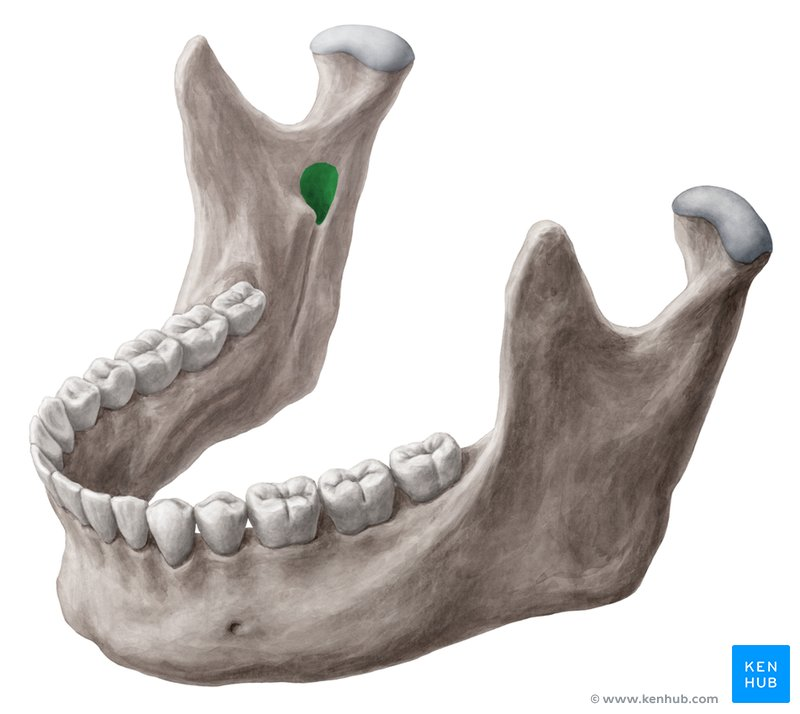
What Facial Landmark is this?
Mandibular Foramen (2-per)
Located @ Mandible
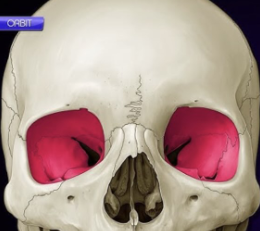
What Structure is this on the Face?
Orbit of the EYE
Located > near the eyes;
Main Function; is a eye-socket > Houses the eyeball
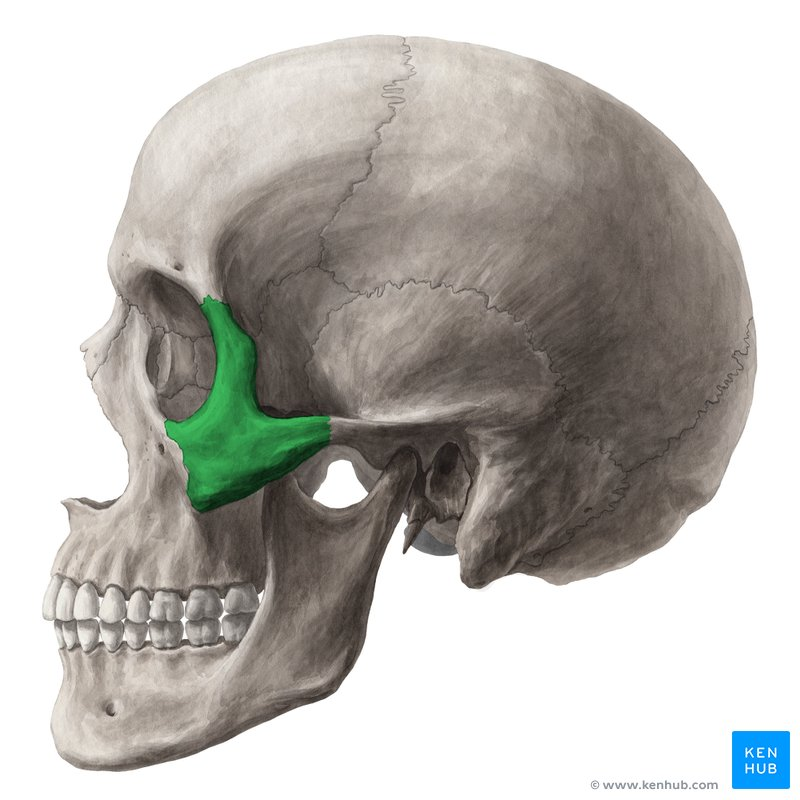
What Structure is this on the Face?
Zygomatic arch
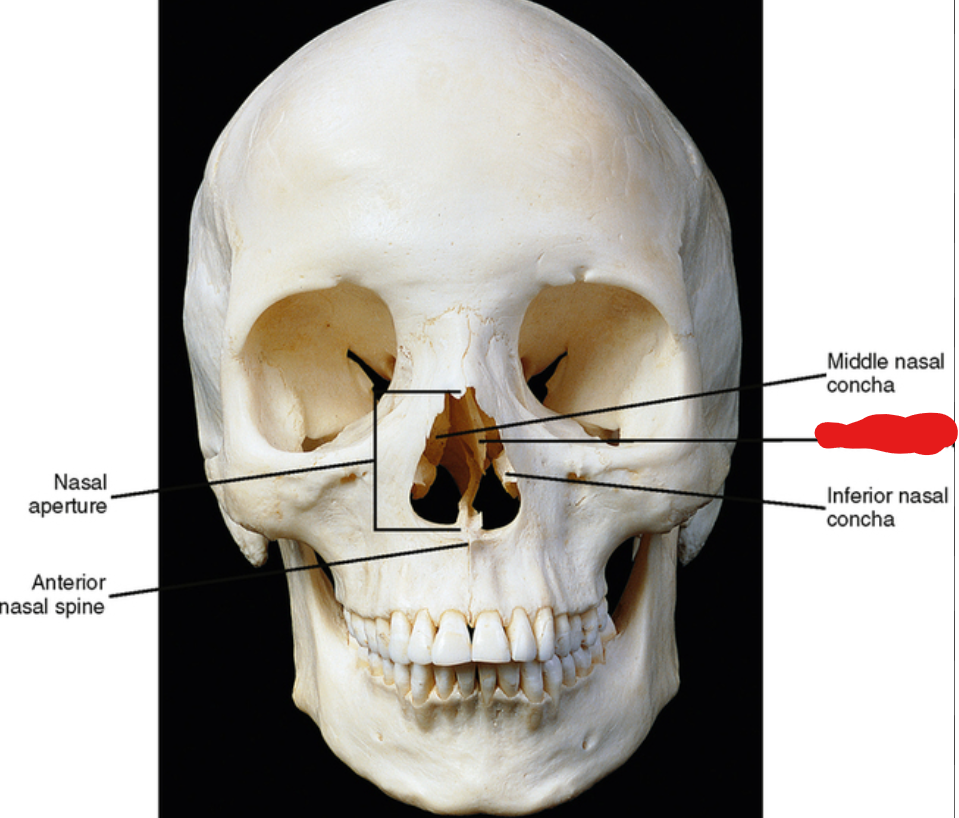
What Structure is this on the Face?
Nasal Septum
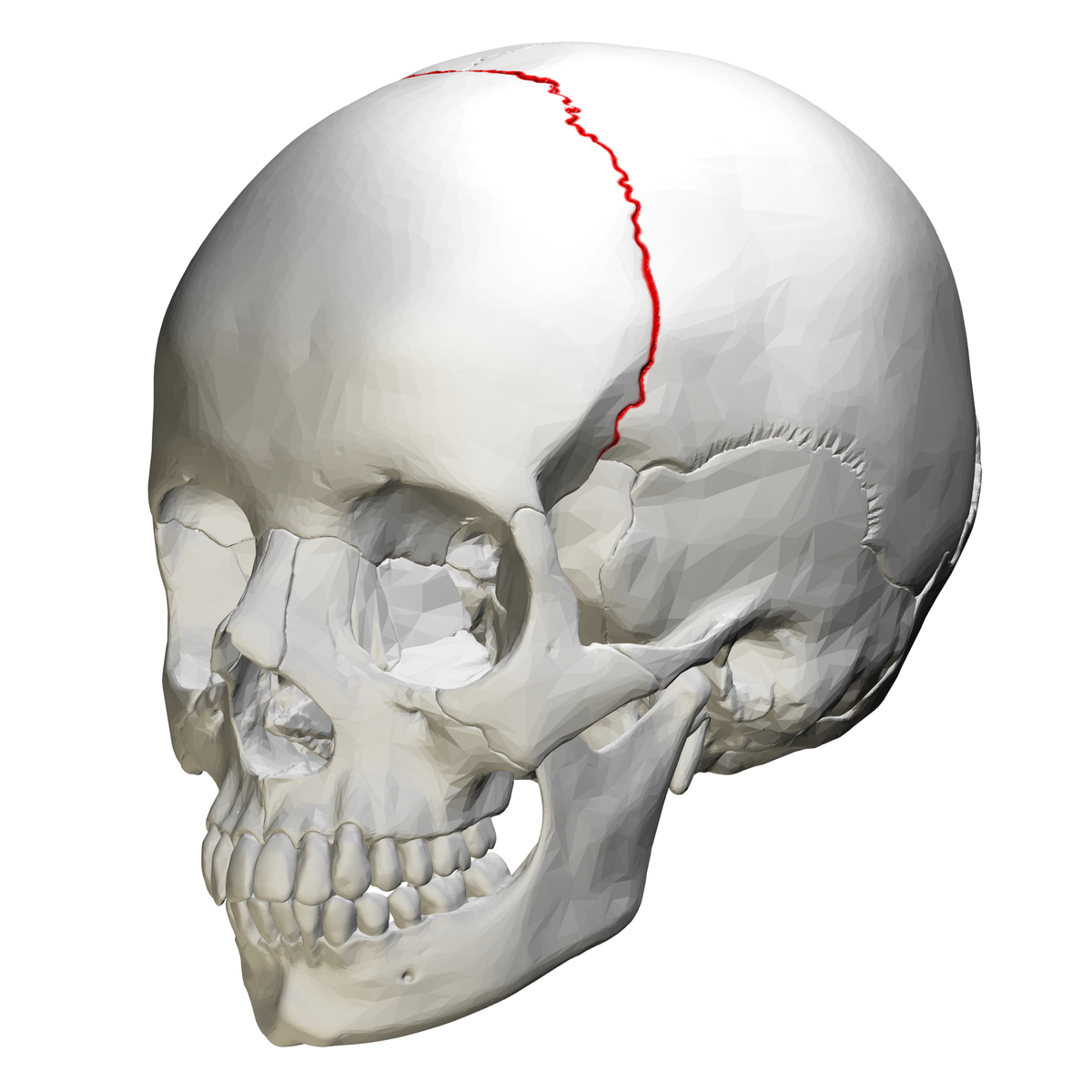
What Cranial or Neck Joint is this?
Coronal Suture (1)
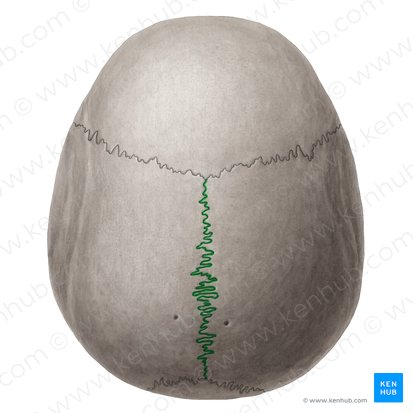
What Cranial or Neck Joint is this?
Saggital Suture (1)
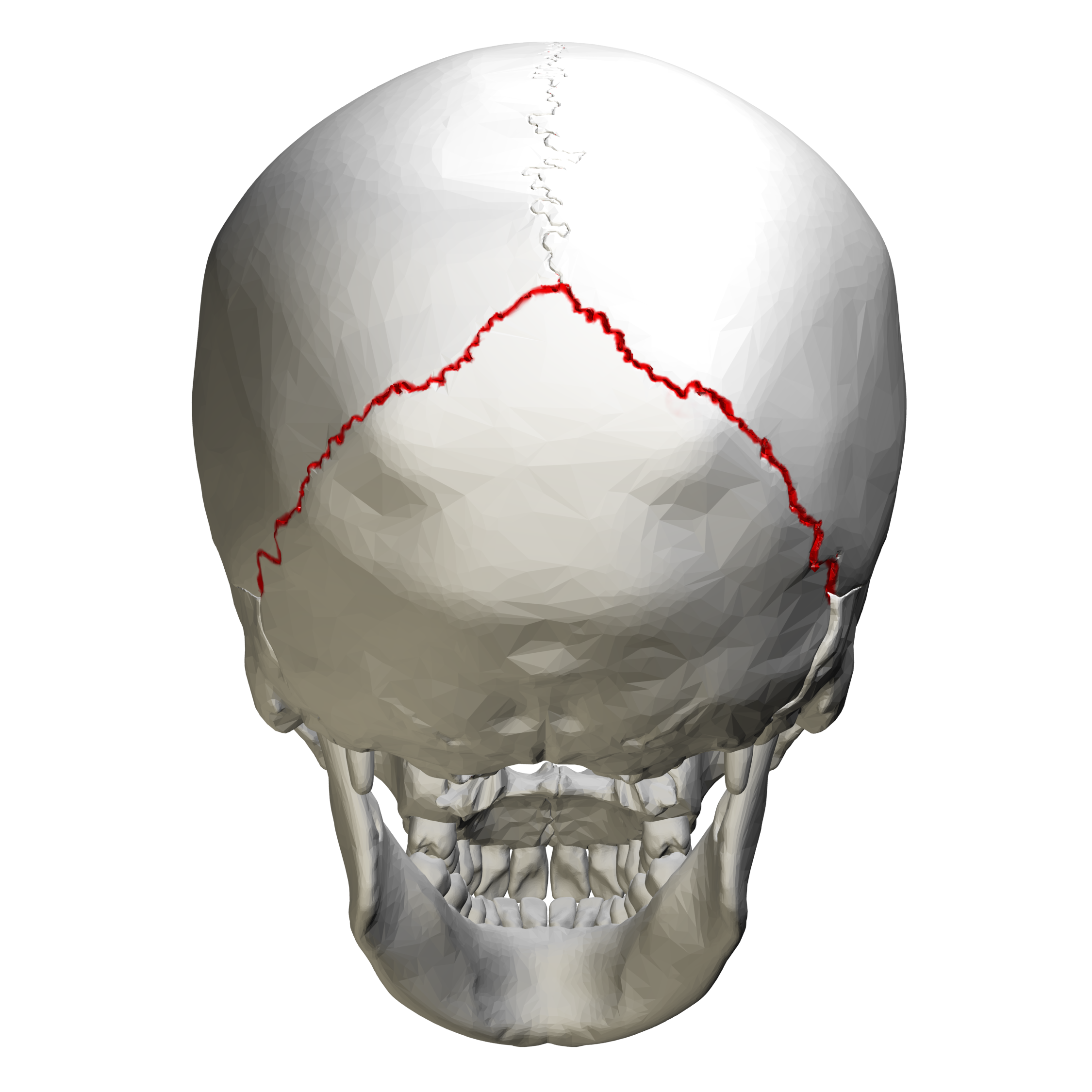
What Cranial or Neck Joint is this?
Lambdoidal Suture (1)
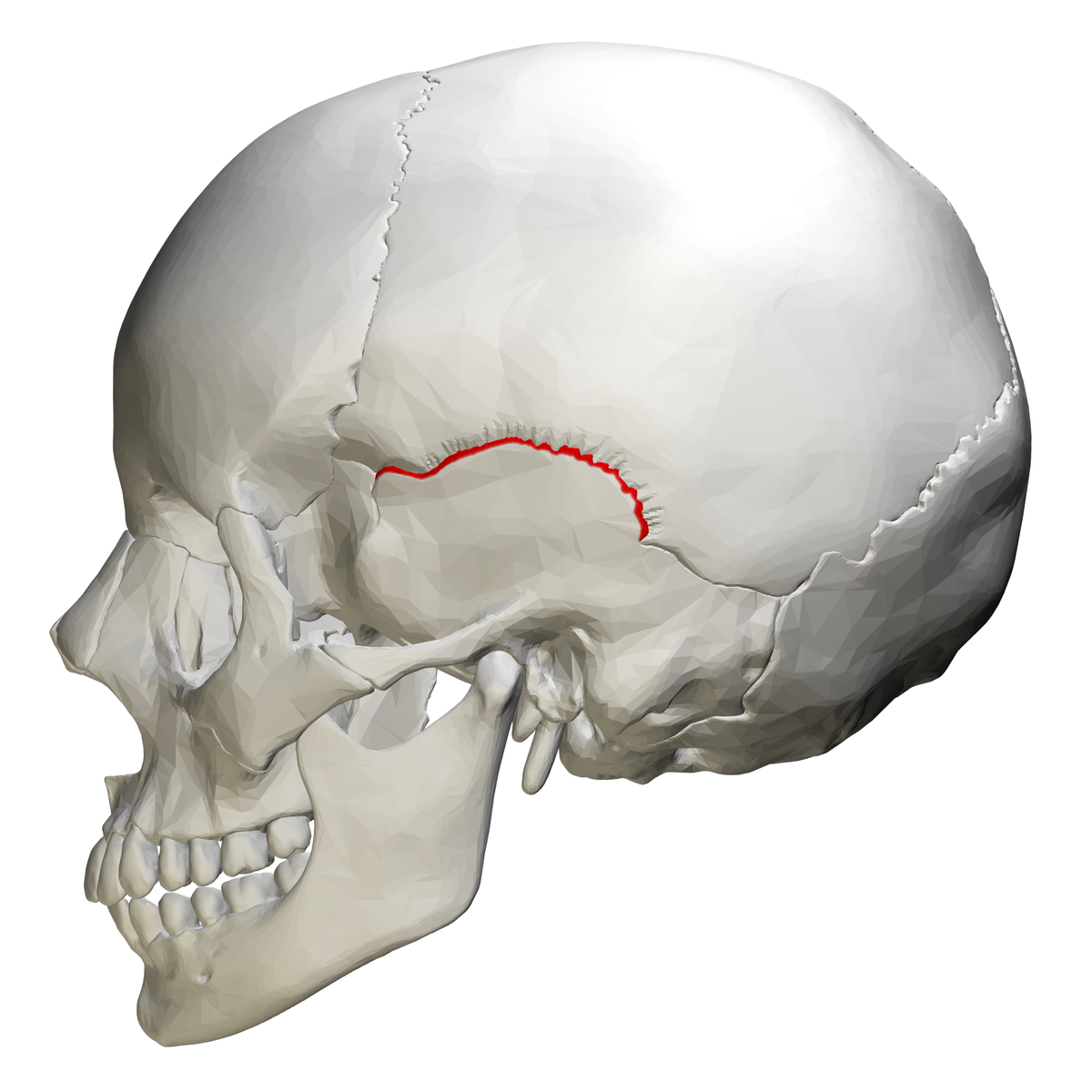
What Cranial or Neck Joint is this?
Squamous Sutures (2)
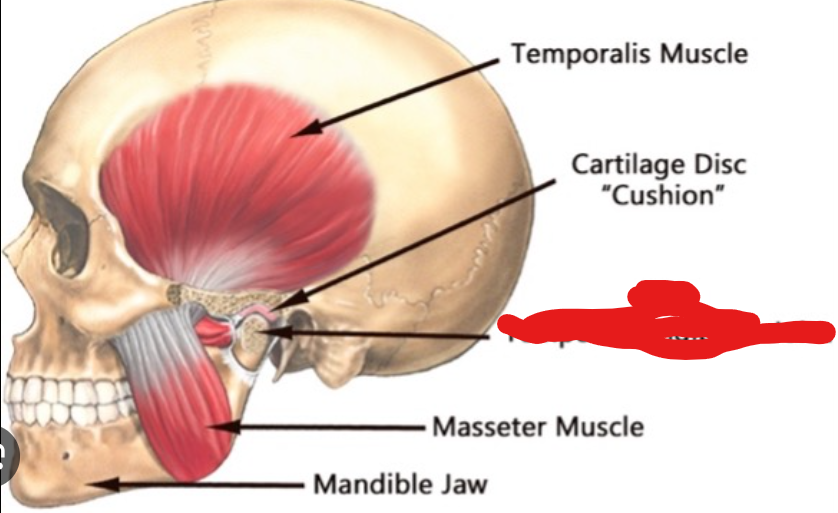
What Cranial or Neck Joint is this?
Temporomandibular Joint (TMJ)
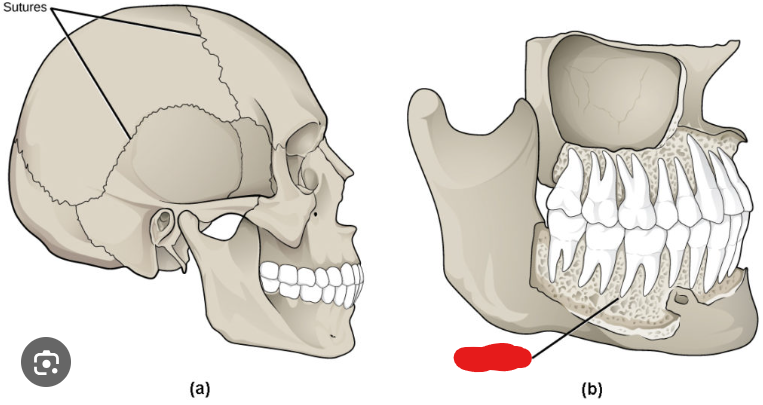
What Cranial or Neck Joint is this?
Gomphosis Joint > (multitude)
WITHIN > the CANALS OF TEETH
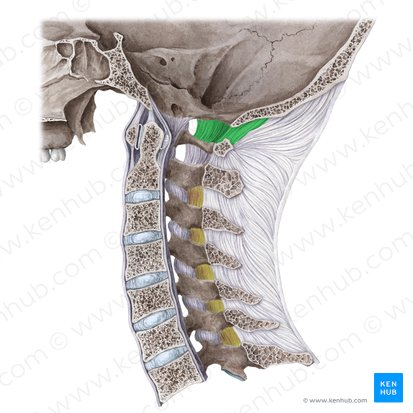
What Cranial or Neck Joint is this?
Atlanto-Occipital Joint (1)
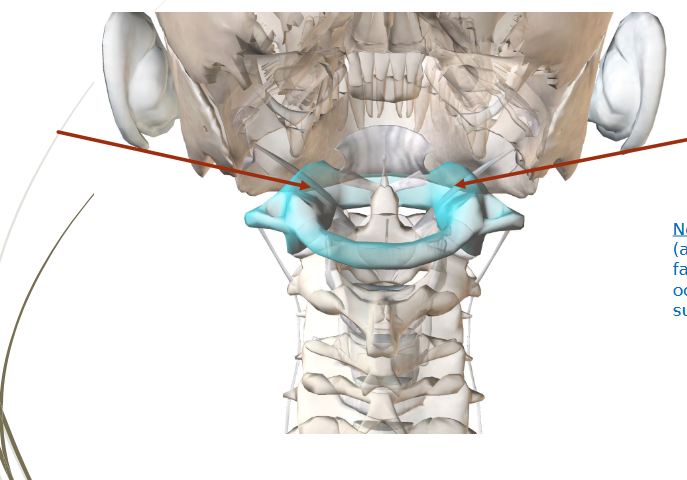
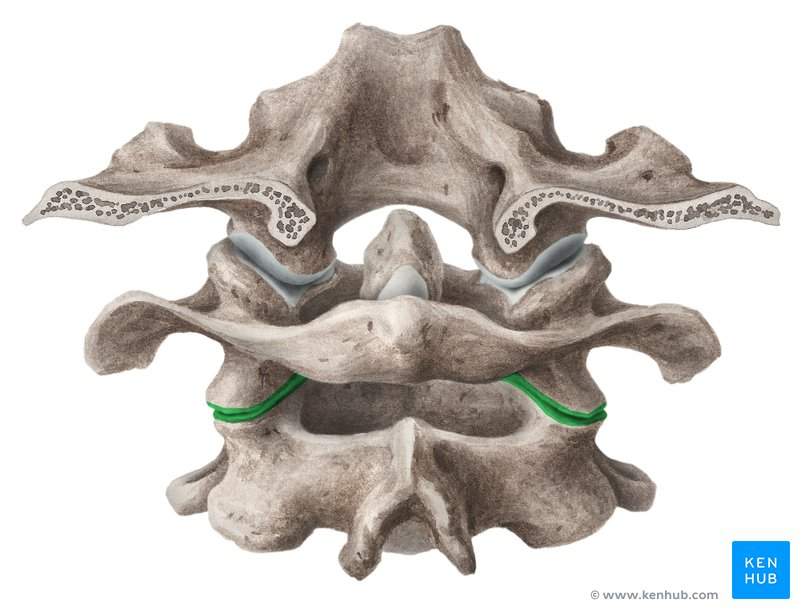
What Cranial or Neck Joint is this?
Atlantoaxial Joint (1)
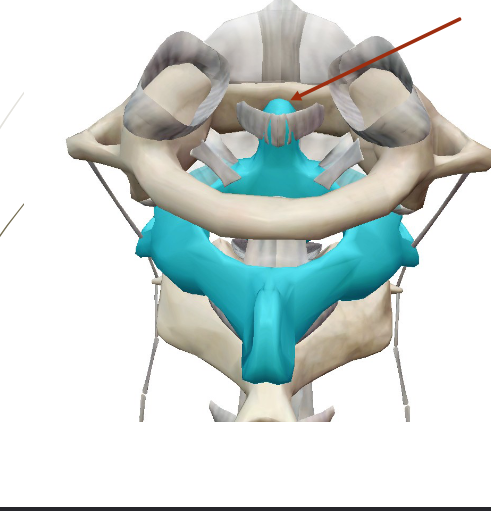
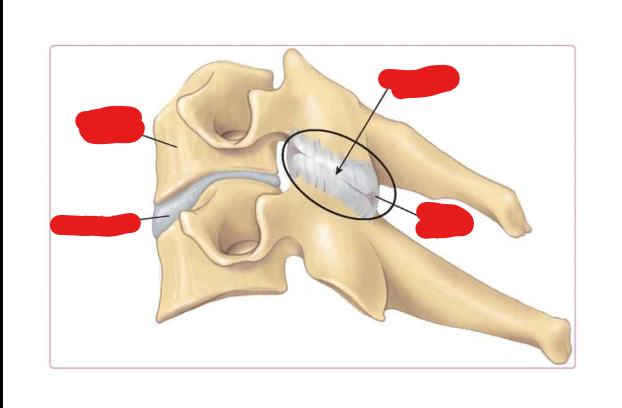
What Joint is this?
Intervertebral FACET joints of CEREVICAL SPINE (several)
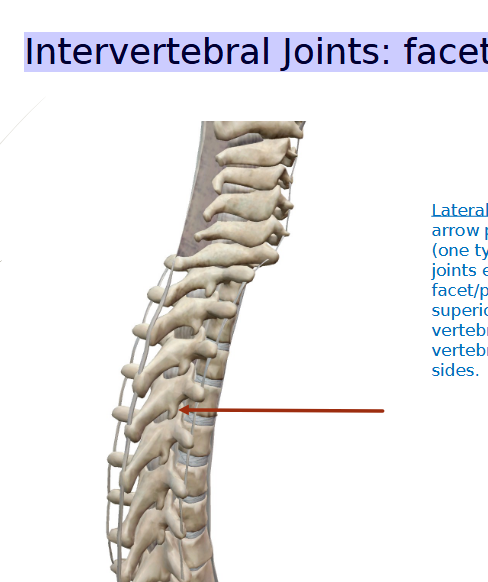
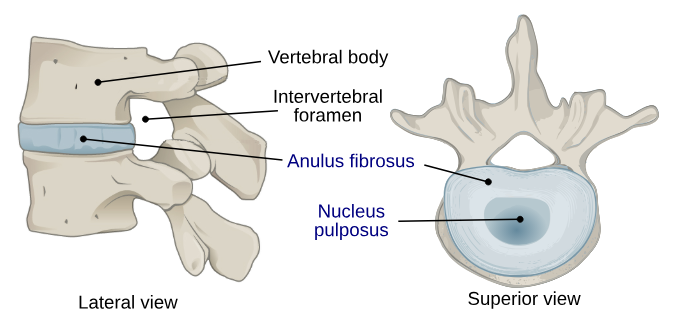
What Joint is this?
Intervertebral Discs of the Cervicale Spine
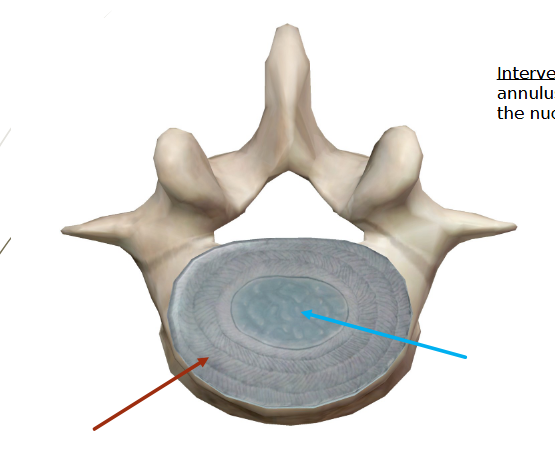
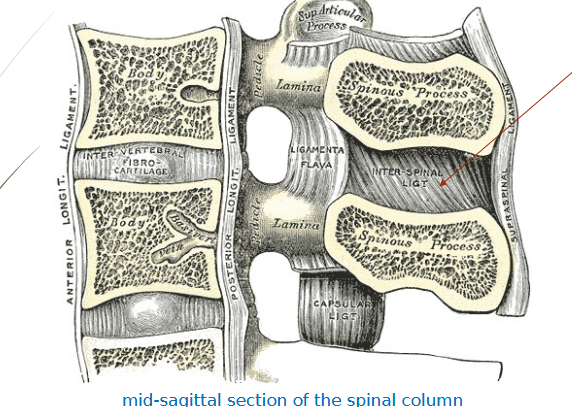
What ligament?
Interspinous ligament
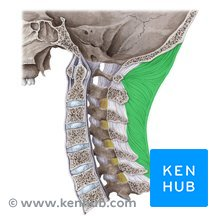
What Cranial or Neck Ligament is this?
Ligamentum Nuchae
Located @ > Cerevical region of VERTEBRA COLUMN
What are the main movements of the face?
Facial Expression
Chewing / Mvmt of Jaw/ Tongue
Moving Eyeball
What are the main movement of the Neck?
Flexion/Extension @ Atlanato-occipital joint > at the CEREVICAL INTERVERTEBRAL JOINTS
Right/Left rotation of head/neck @ Atlantiaxial-joint @ cerevical intervertebral-joints
Right/Left - side flexion (*Lateral Flexion*) > of head/neck @ atlanto-occipital joint @ CEREVICAL INTERVERTEBRAL JOINTS
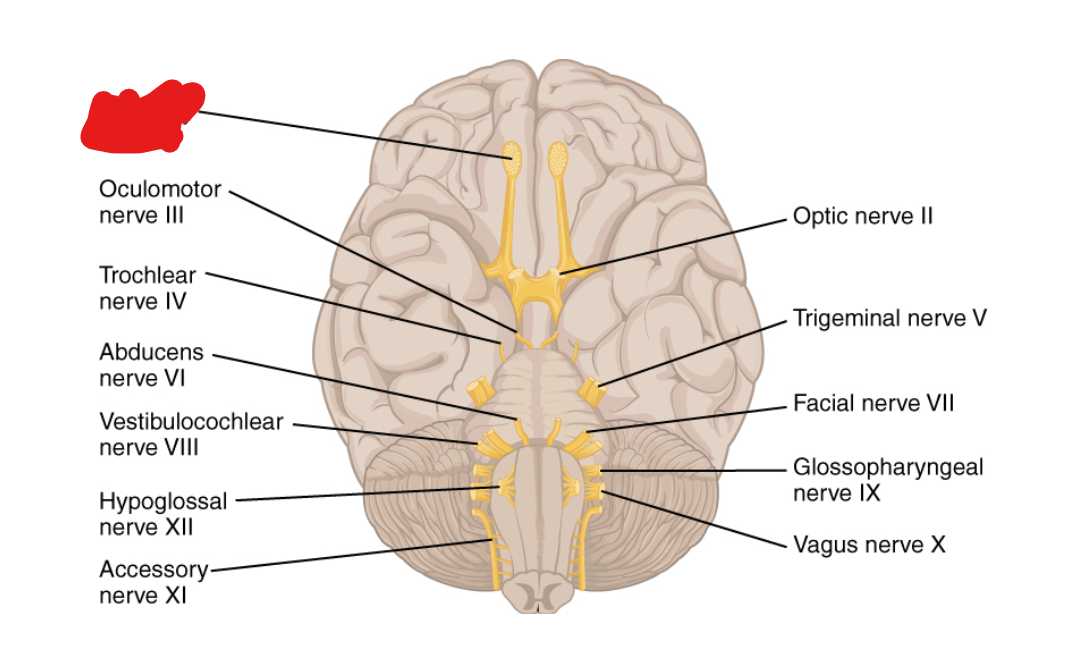
What Cranial Nerve Is this?
Olfactory Nerve I
SENSORY Function: Smell
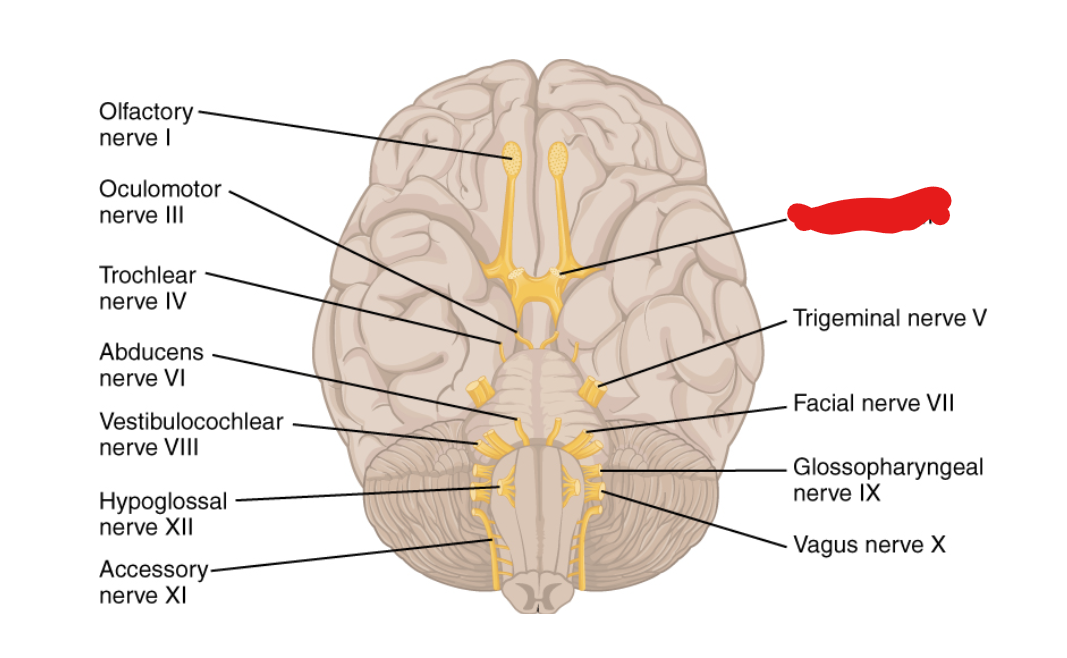
What Cranial Nerve Is this?
Optic Nerve II
SENSORY Function: Vision
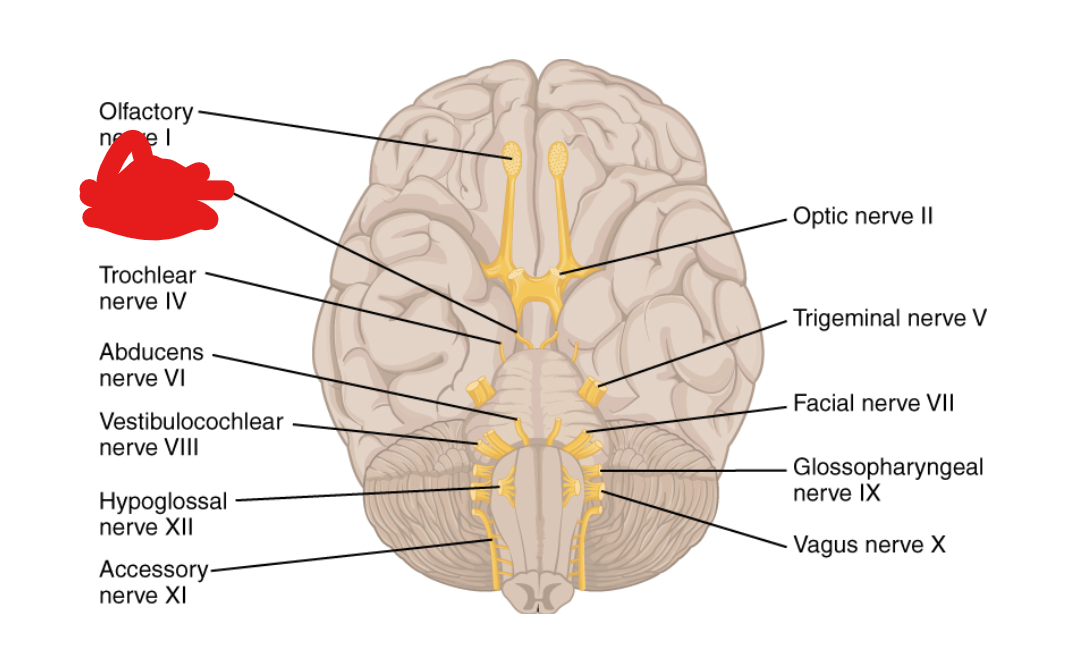
What Cranial Nerve Is this?
Oculomotor Nerve III
MOTOR Function: MOTOR (Somatic VOLUNTARY ACTION of EYE MUSCLES)
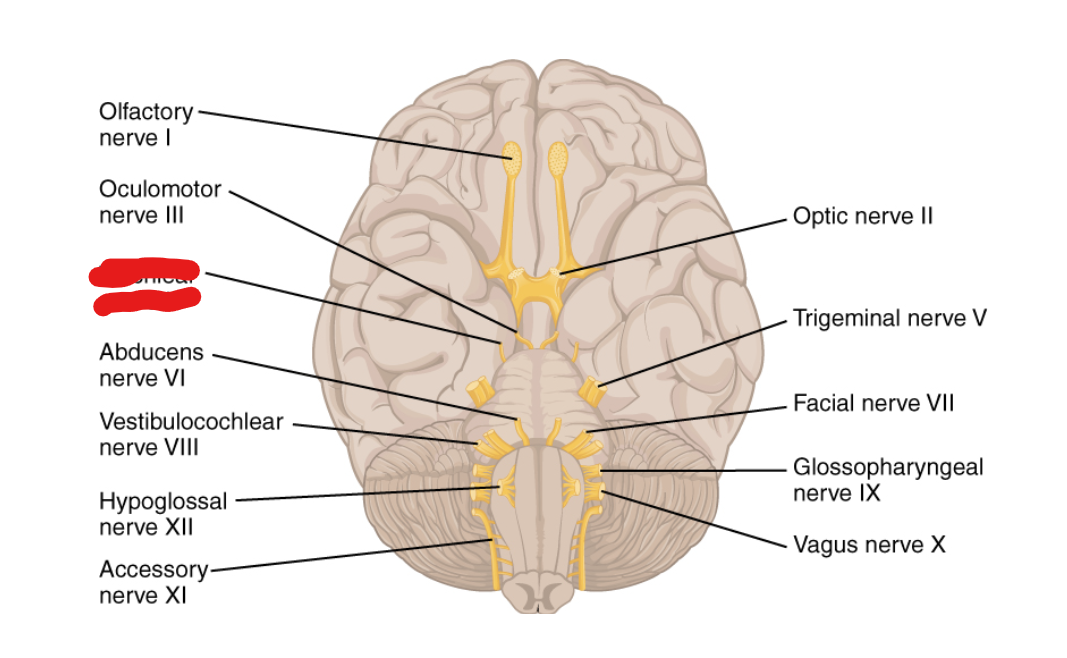
What Cranial Nerve Is this?
Trochlear Nerve IV
MOTOR Function: (Control the Movement of EYE MUSCLES > *Superior Oblique
Primarily downward rotations
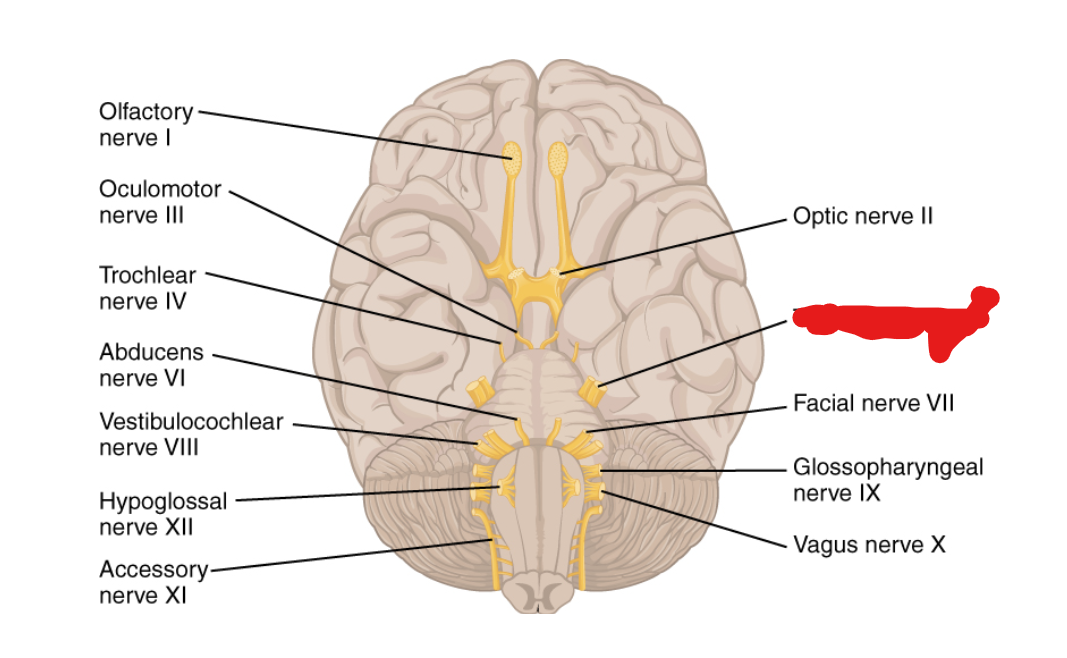
What Cranial Nerve Is this?
Trigeminal Nerve V
MIXED Function: (MOTOR > Mastication *chewing*) / SENSORY > SKIN/SCALP
Provides sensation to the face and mouth, and controls chewing.
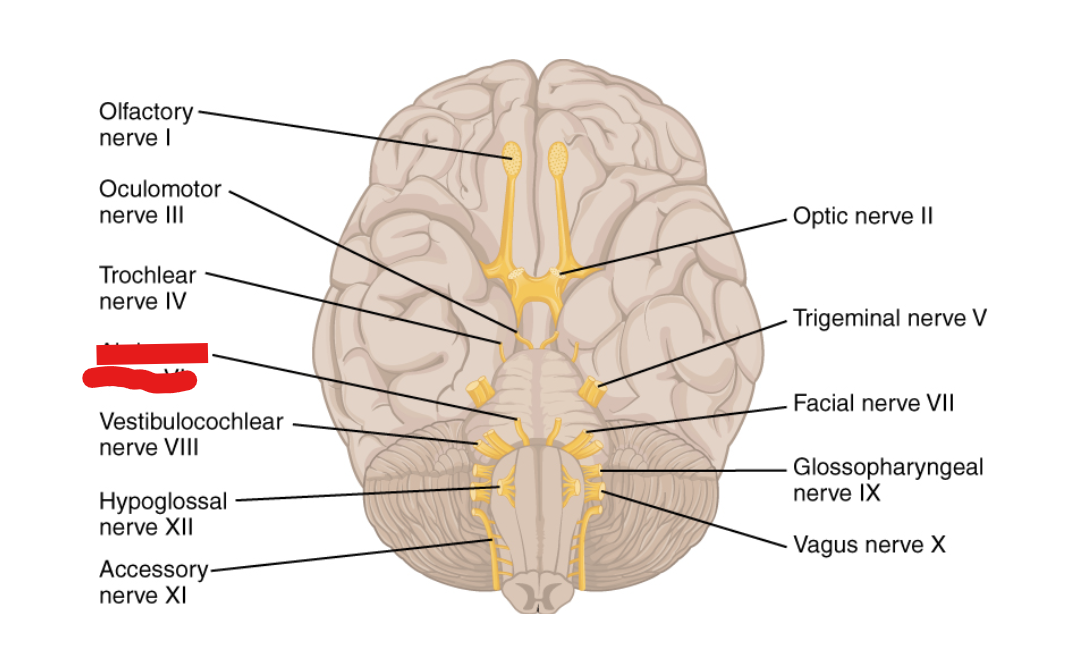
What Cranial Nerve Is this?
Abducens Nerve VI
MOTOR Function: Motor > Eye Muscles (Lateral Rectus)
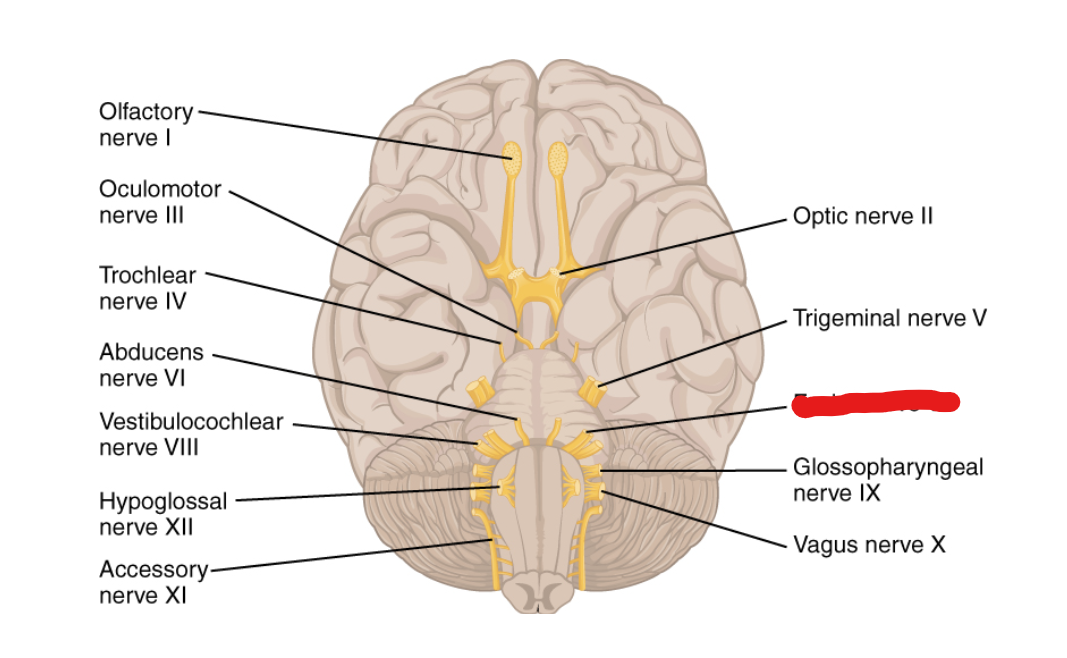
What Cranial Nerve Is this?
Facial Nerve VII
MIXED Function: (in-class > MOTOR = MVMT OF MUSCLES OF FACIAL EXPRESSION)
Controls facial expressions, provides taste to the front of the tongue, and stimulates tear gland
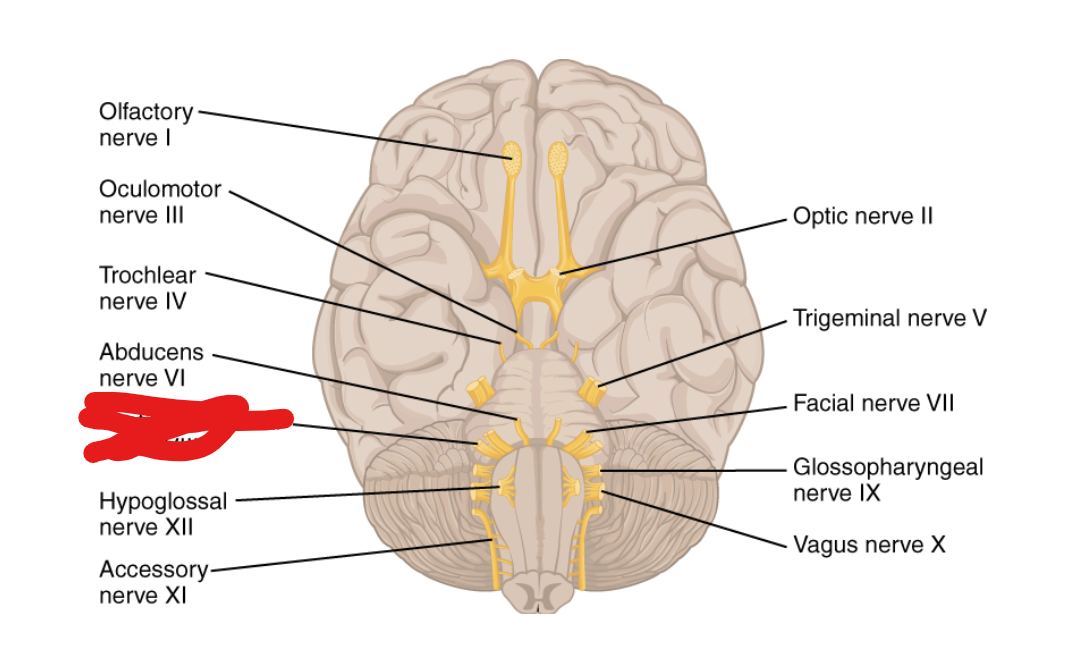
What Cranial Nerve Is this?
Vestibulocochlear Nerve VIII
SENSORY Function: Inputs of BALANCE/HEAD POSITION
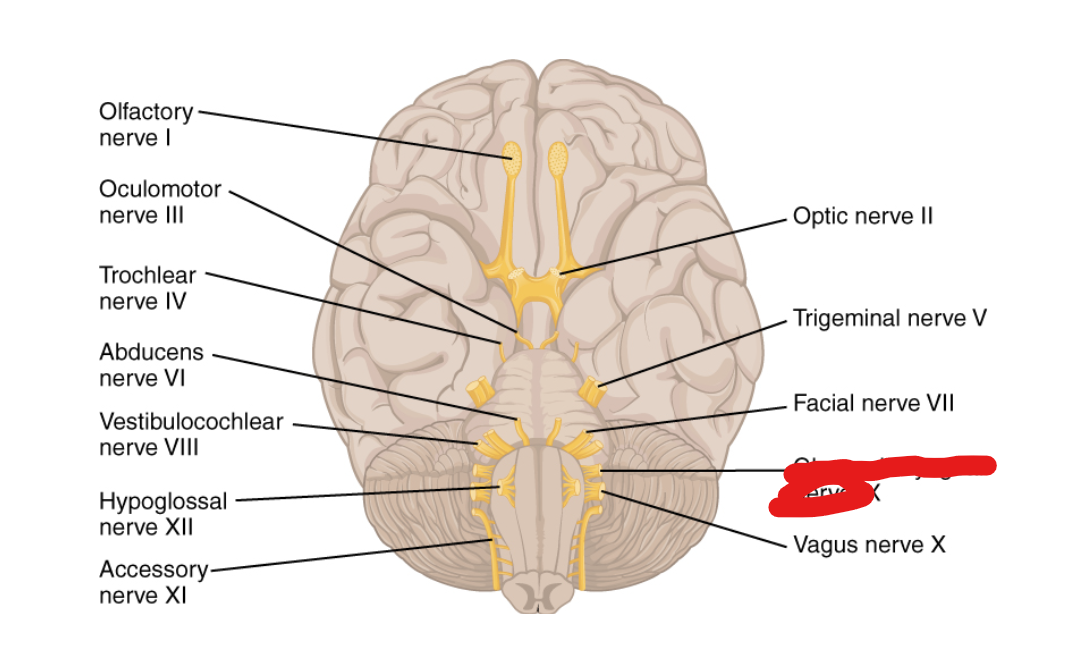
What Cranial Nerve Is this?
Glossopharyngeal Nerve IX
MIXED Function: (MOTOR/SOMATIC) > muscles of PHARYNX > aids in swallowing
MOTOR/PARASYMPAHTIC > salivary gland
SENSORY > taste from 1/3 of TONGUE
SENSORY > input for O2/C02 = (Chemoreceptors detects chemical changes) / BLOOD PRESSURE = (Bareceptors)
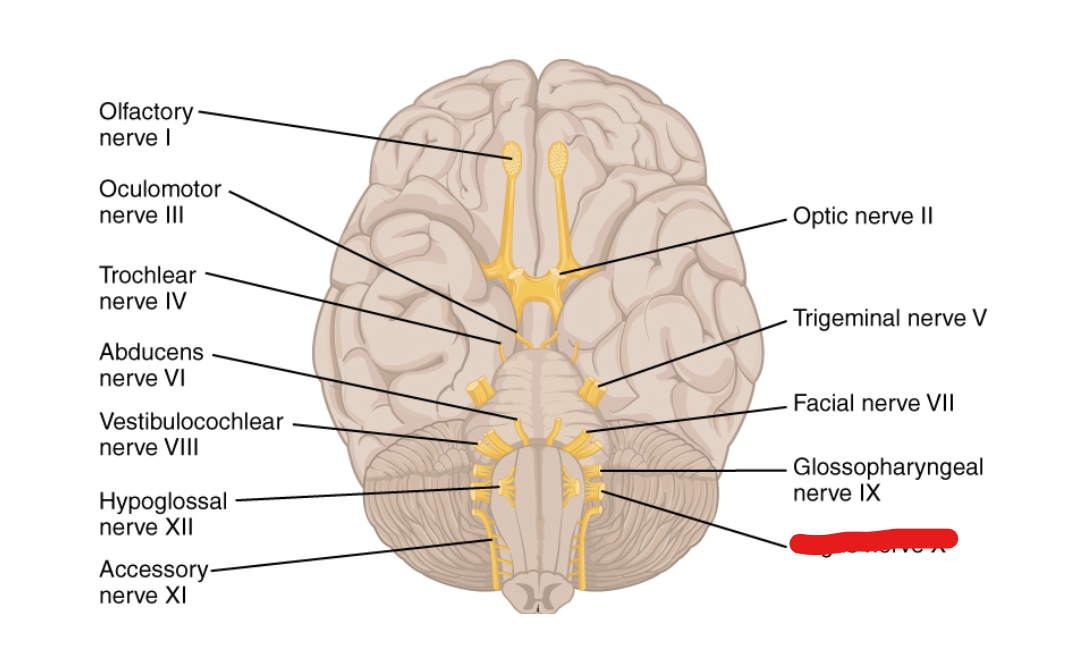
What Cranial Nerve Is this?
Vagus Nerve X
MIXED Function: (Regulates internal organs like the heart and digestive system, as well as speech and swallowing)
(MOTOR/SOMATIC) > aids in muscles of pharynx/larynx = SWALLOWING/SPEAKING
(MOTOR/PARASYMPATHETIC) > aids in CONTRACTION of smooth/cardiac muscle (within *gi tract / respiratory tract)
(SENSORY) > input for O2/CO2 -(Chemoreceptors)
BLOOD PRESSURE - (Barorecptors)
VISERAL ORGAN SENSATIONS
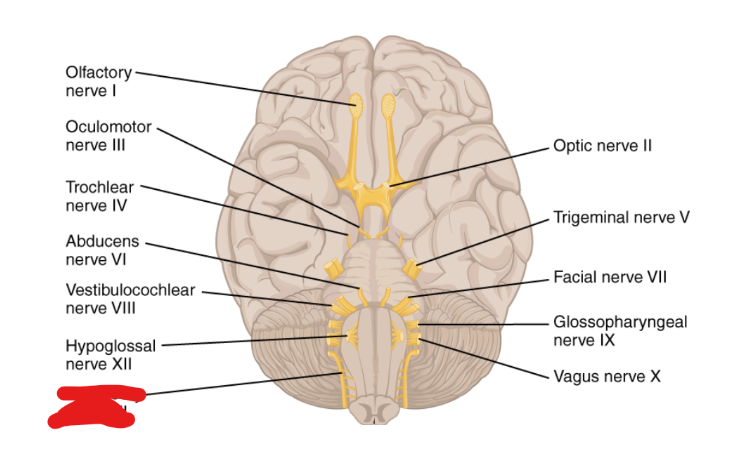
What Cranial Nerve Is this?
Acessory Nerve XI
Motor Function: (moves the STERNOCLEIDOMASTOID/TRAPEZIUS > MUSCLES)
Moves muscles in the back of NECK/SHOULDER
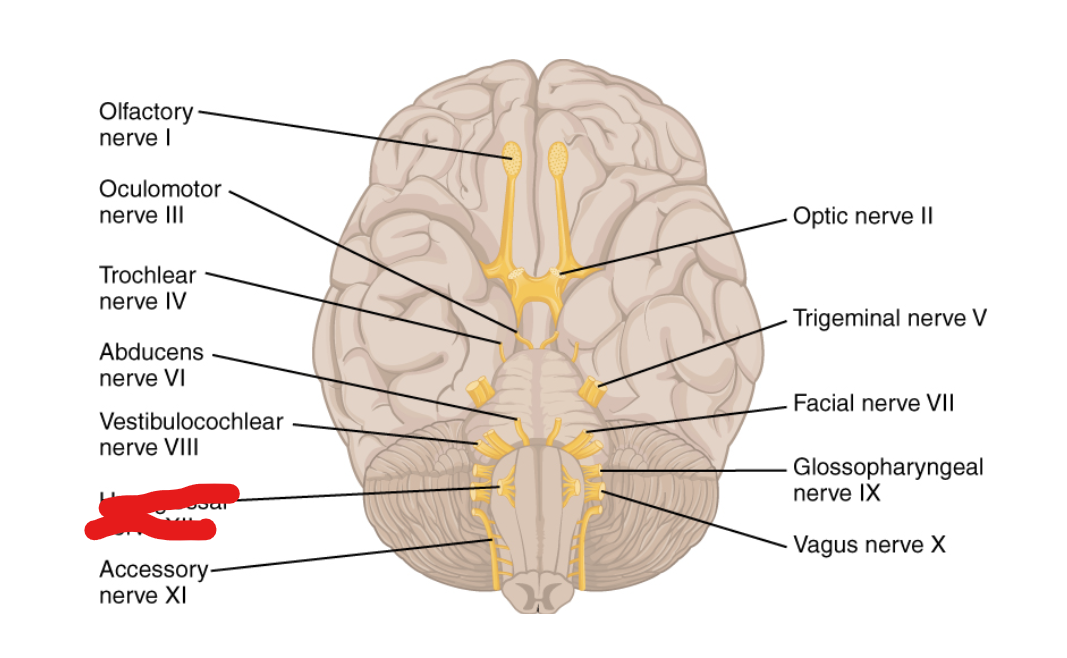
What Cranial Nerve Is this?
Hypoglossal Nerve XII
Motor Function: (MOVES THE TONGUE)
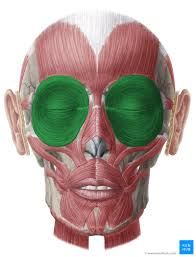
What muscle is this, its action and INNERVATION
Orbicularis Oculi
(Cranial Nerve VII)
Closes eyelids
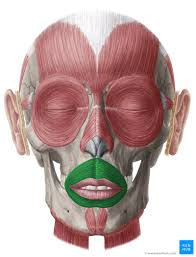
What muscle is this, its action and INNERVATION
Orbicularis Oris
Facial Nerve VII
closes / compresses lips
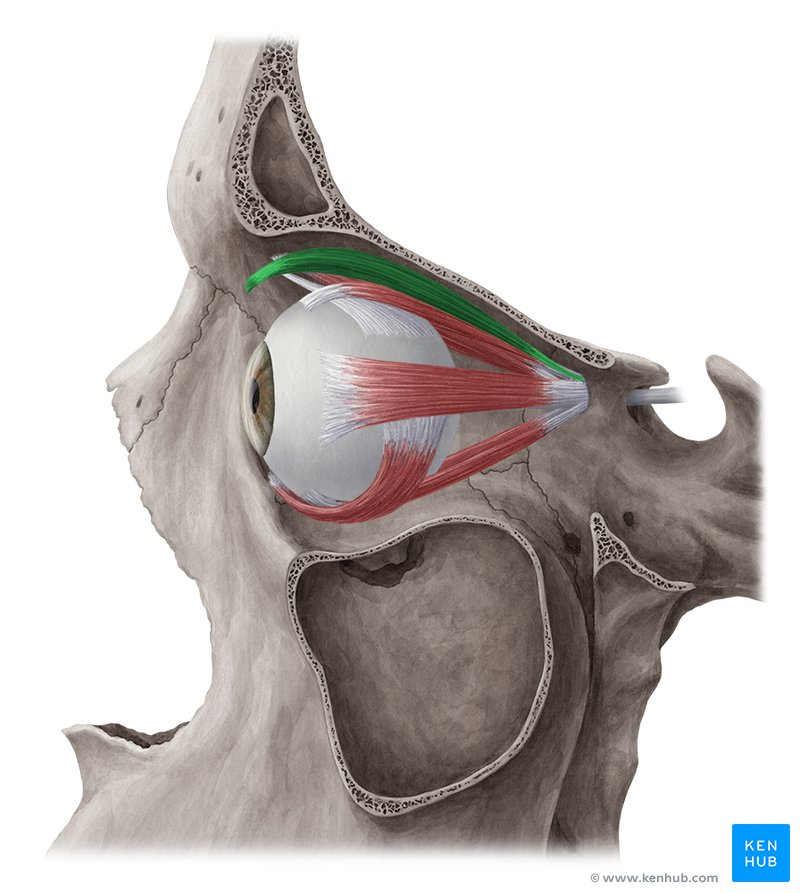
What muscle is this, its action and INNERVATION
Levator Palpebrae Superioris
Cranial Nerve III
Raises Eyelid / (during upward gaze)
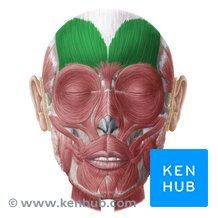
What muscle is this, its action and INNERVATION
Frontalis
Cranial Nerve VII
Elevates Eyebrows / Wrinkles Forehead